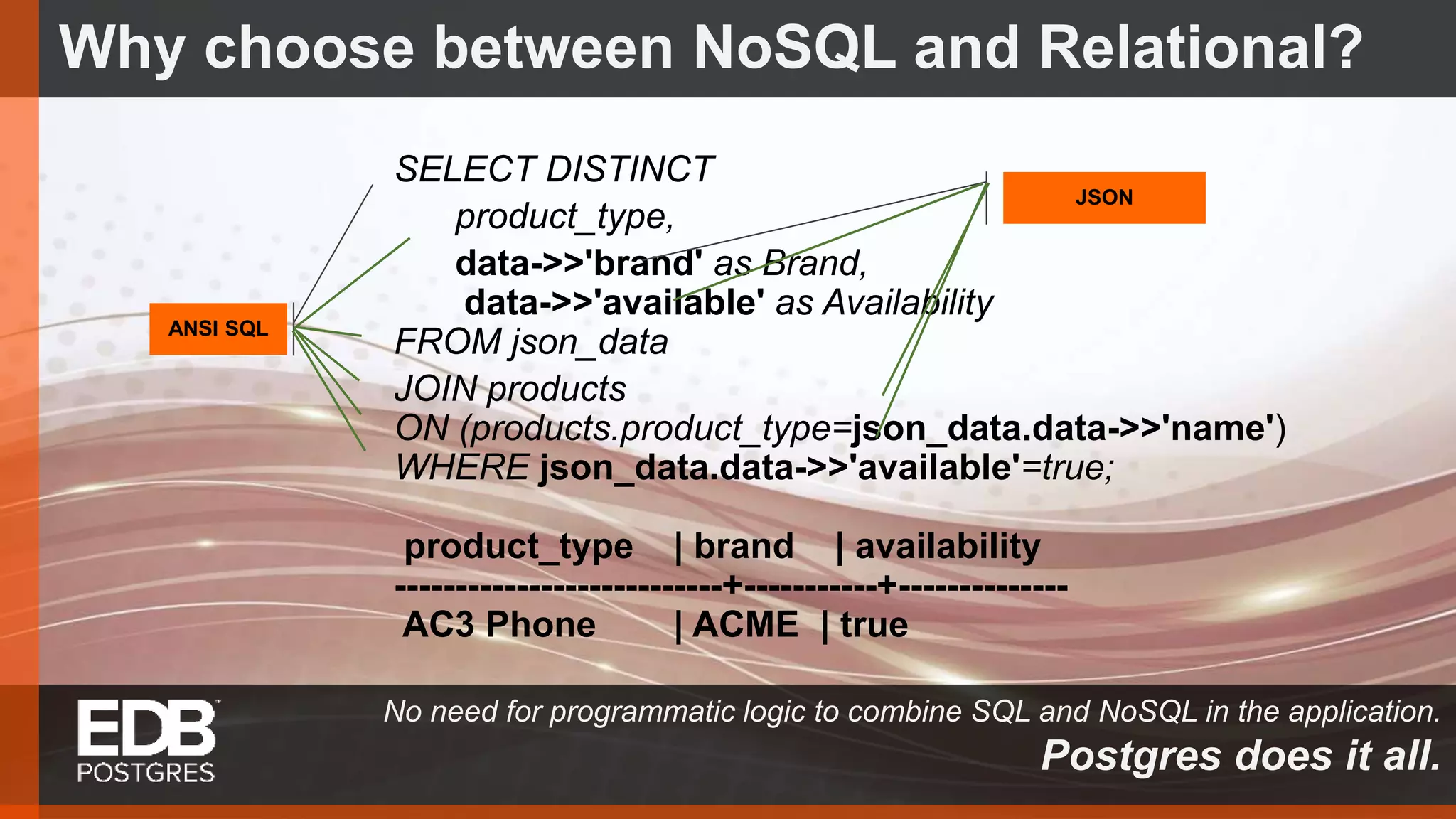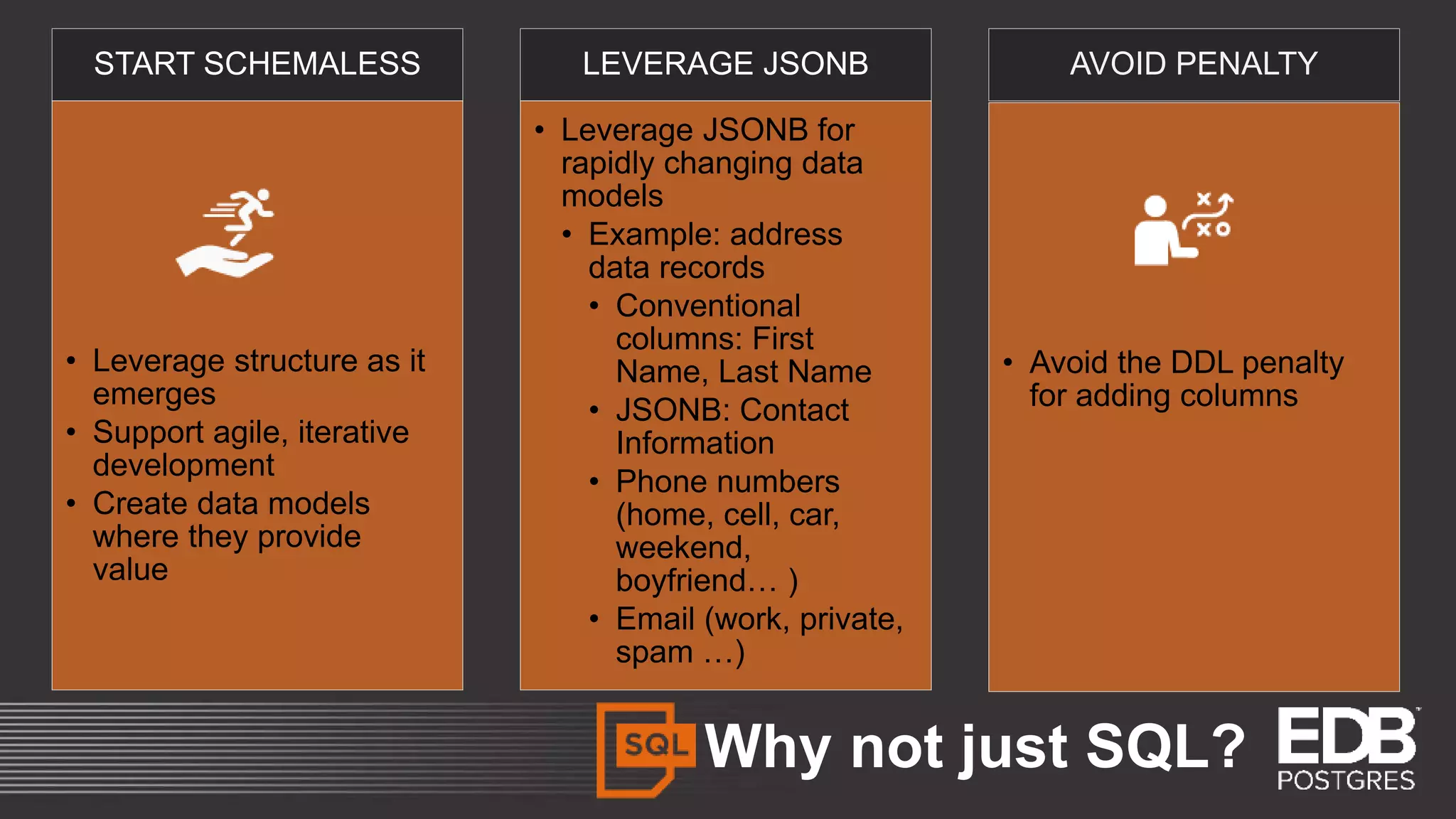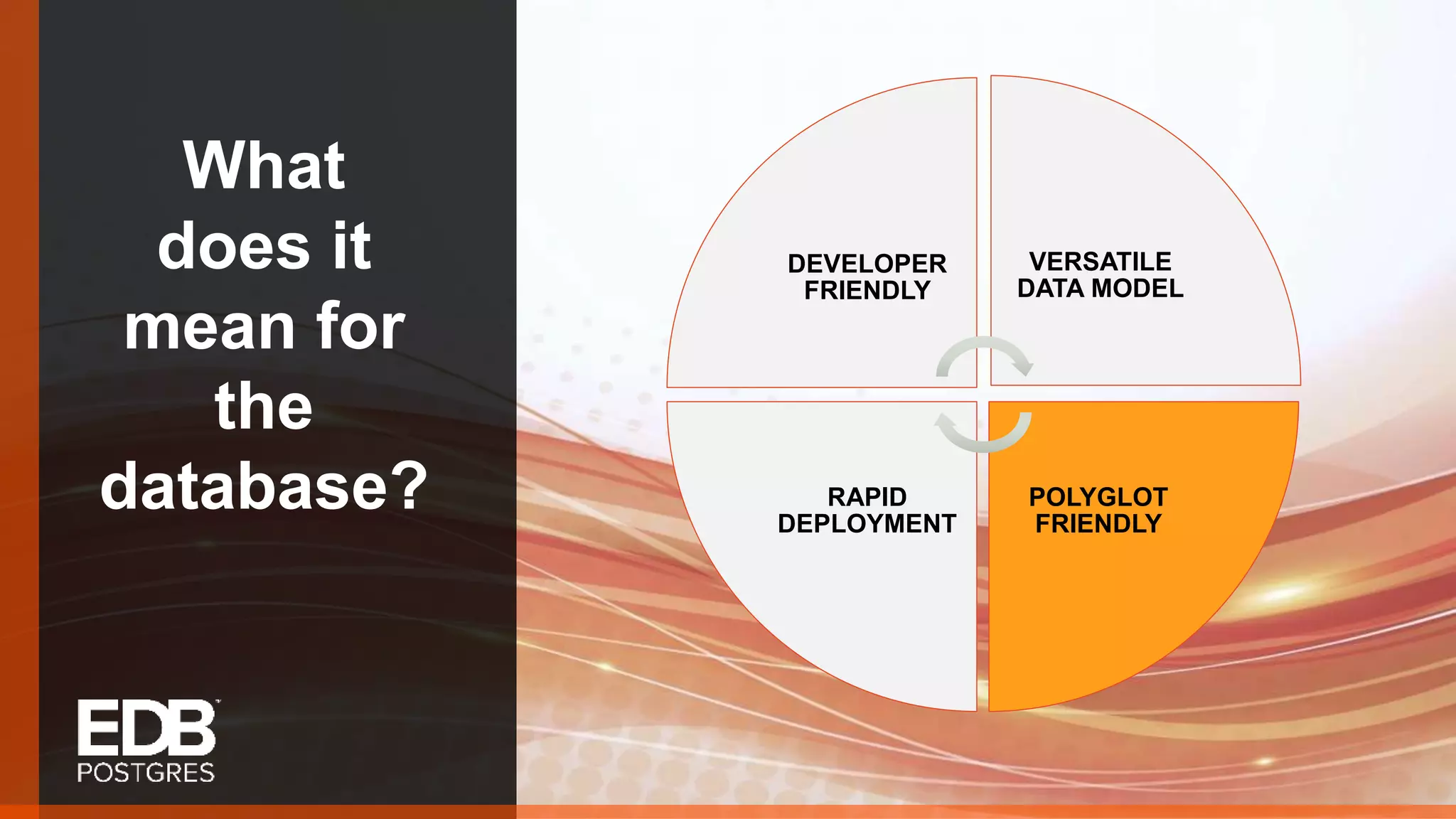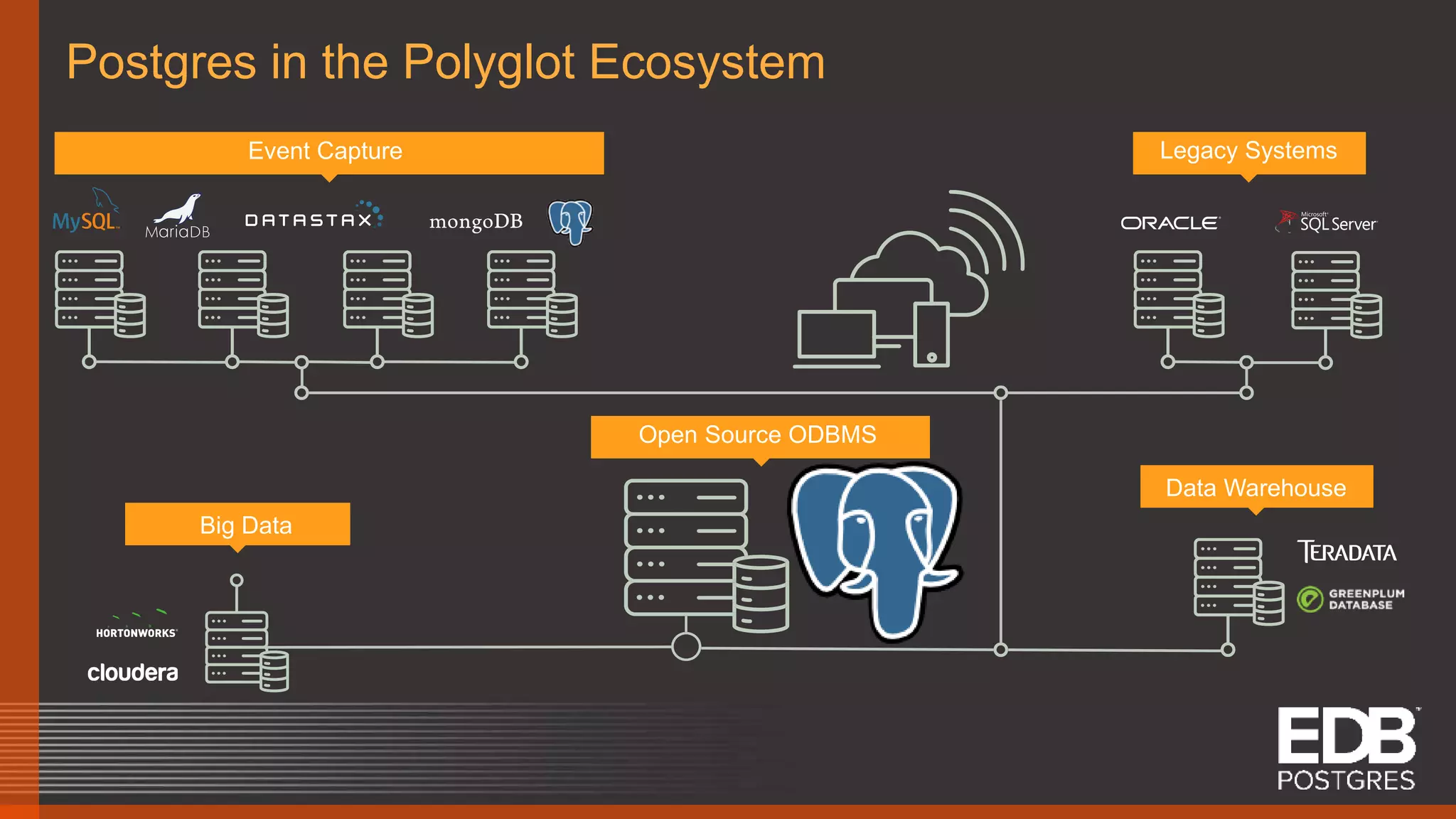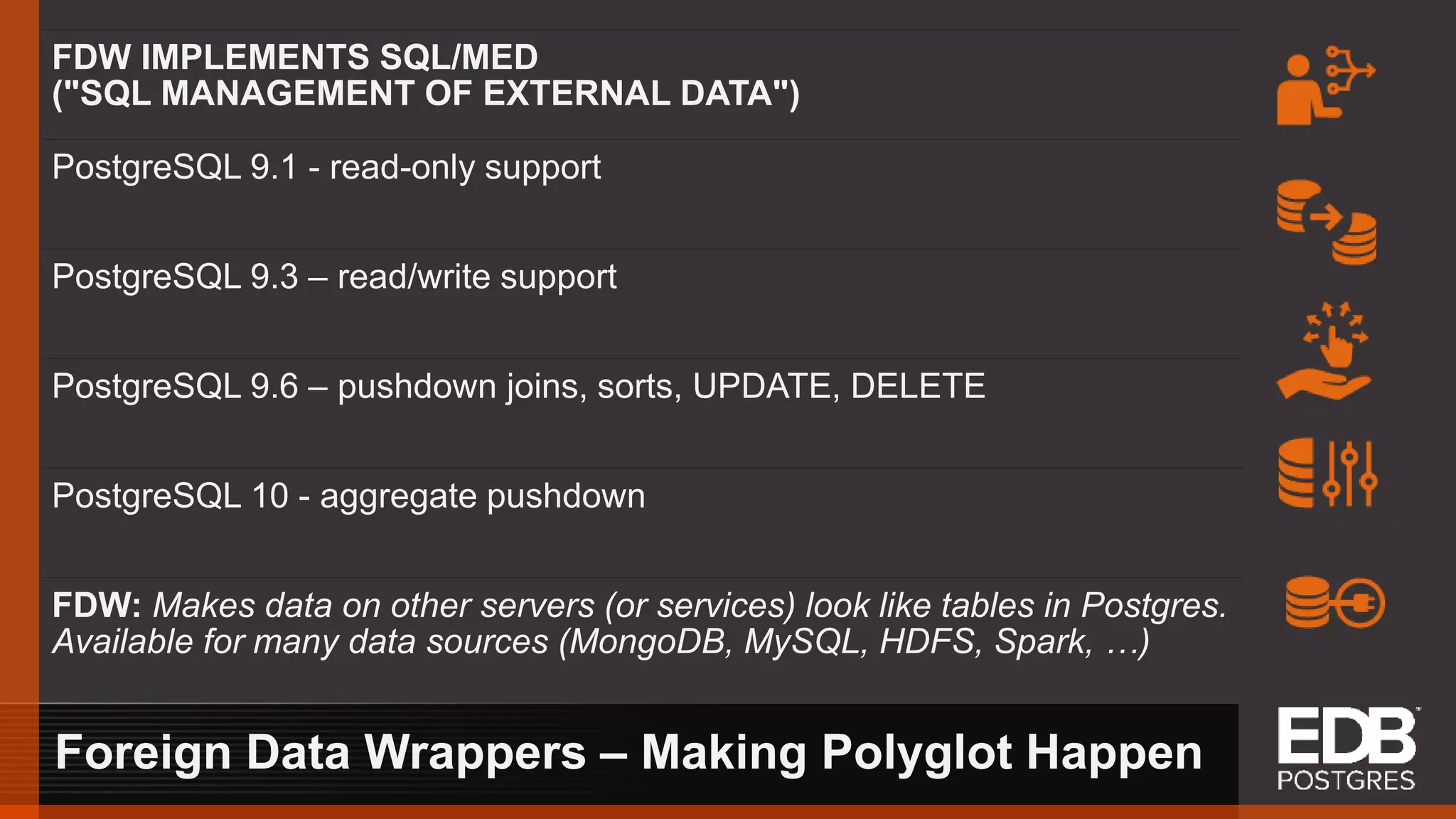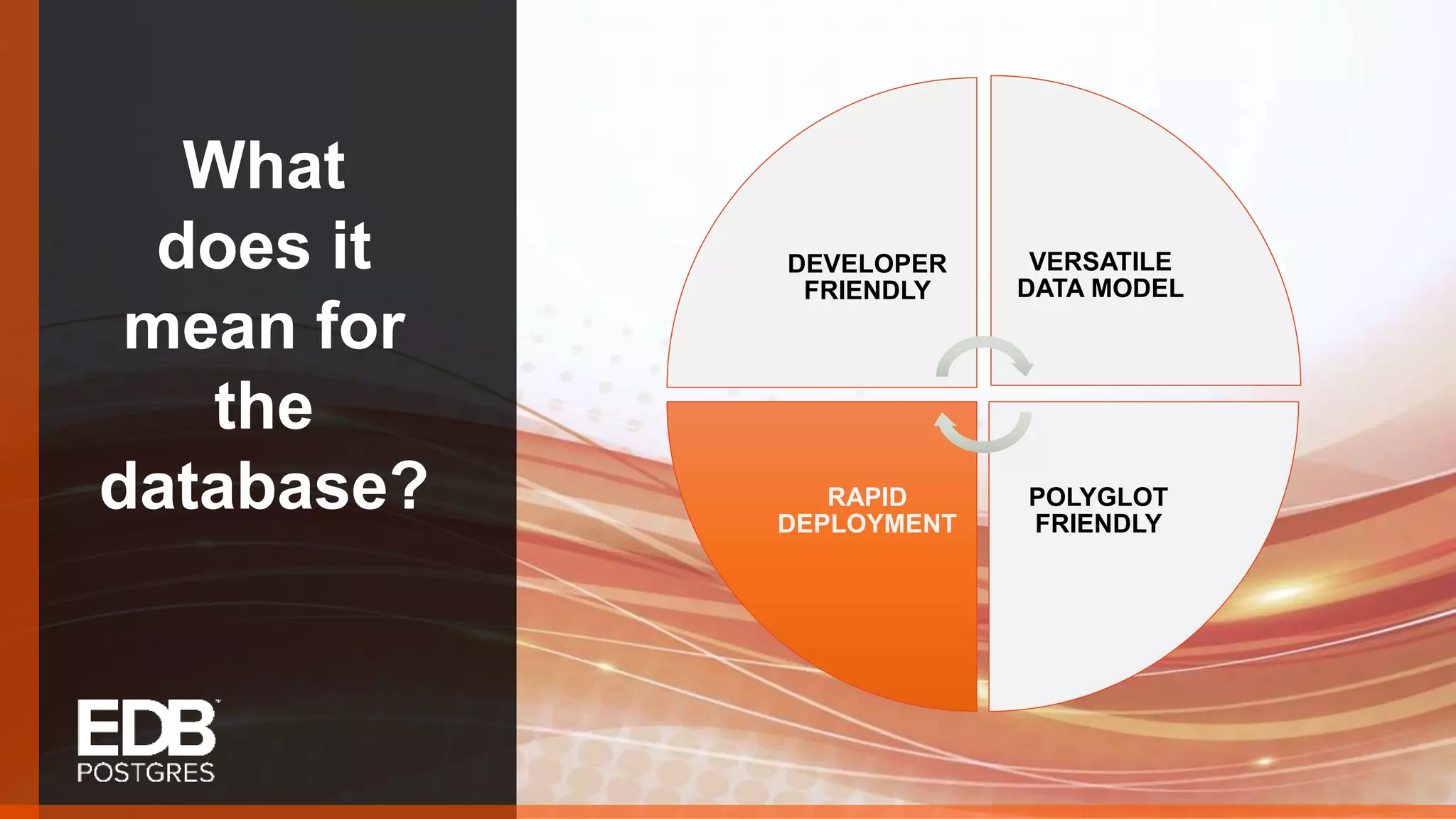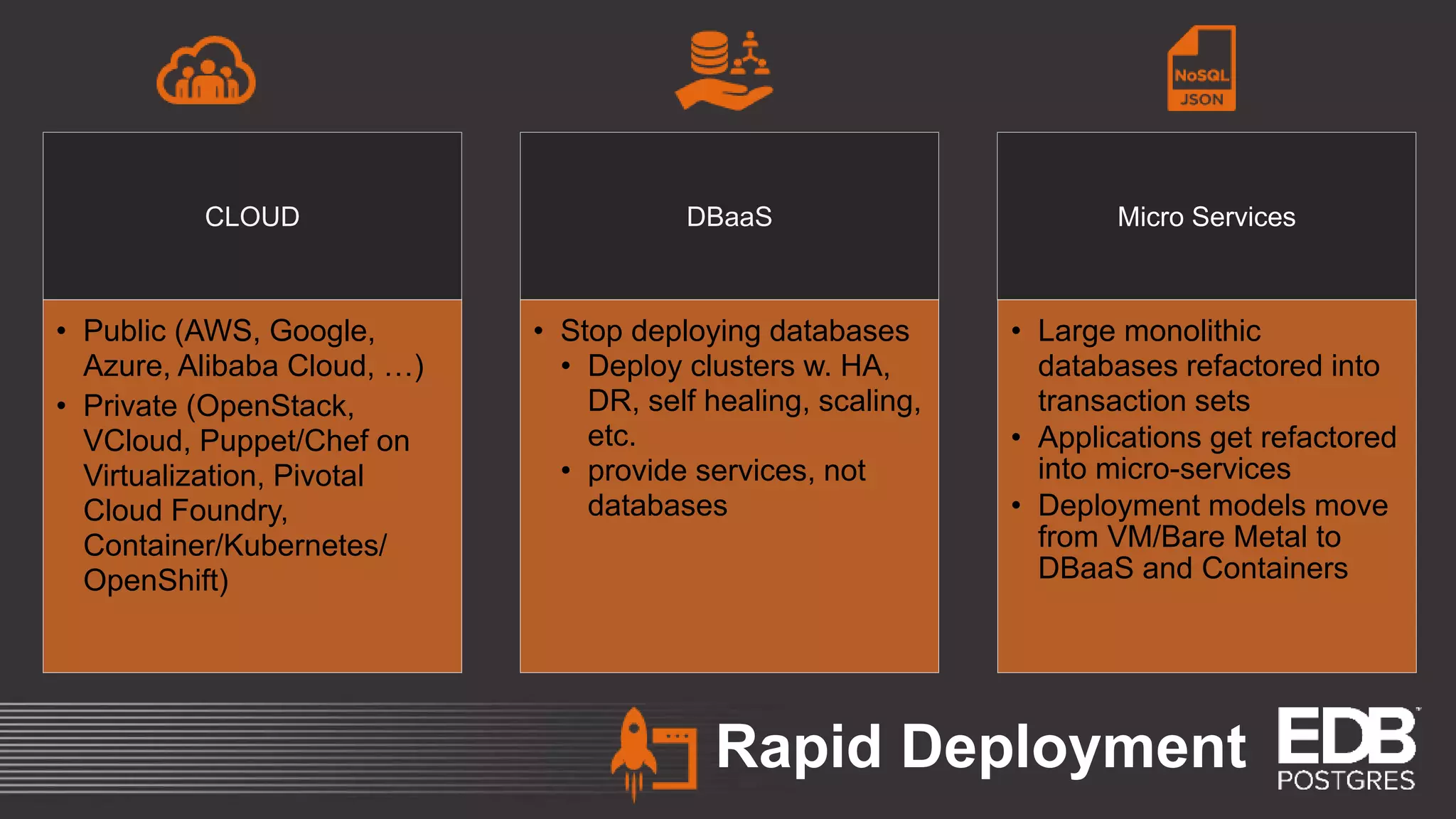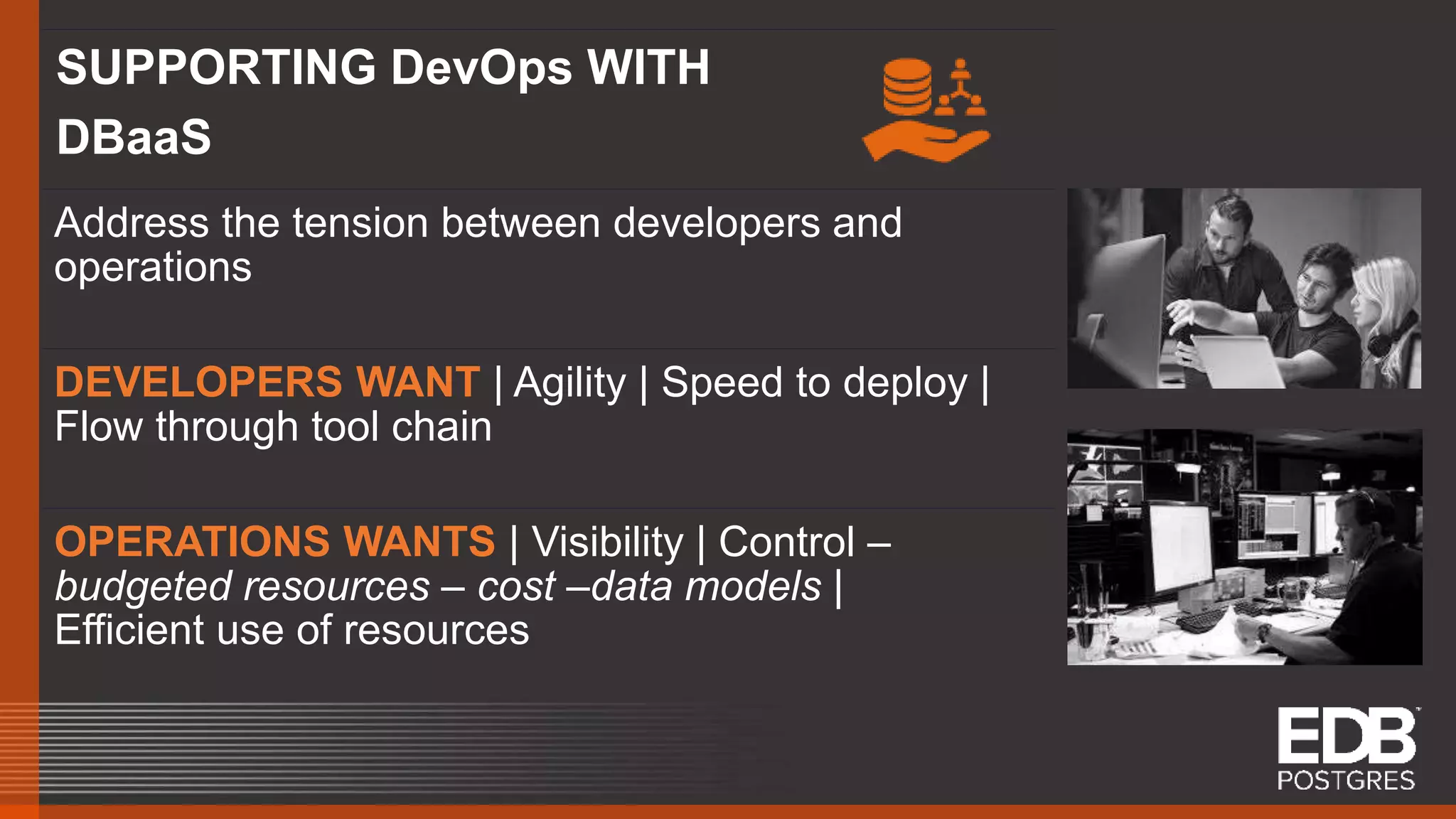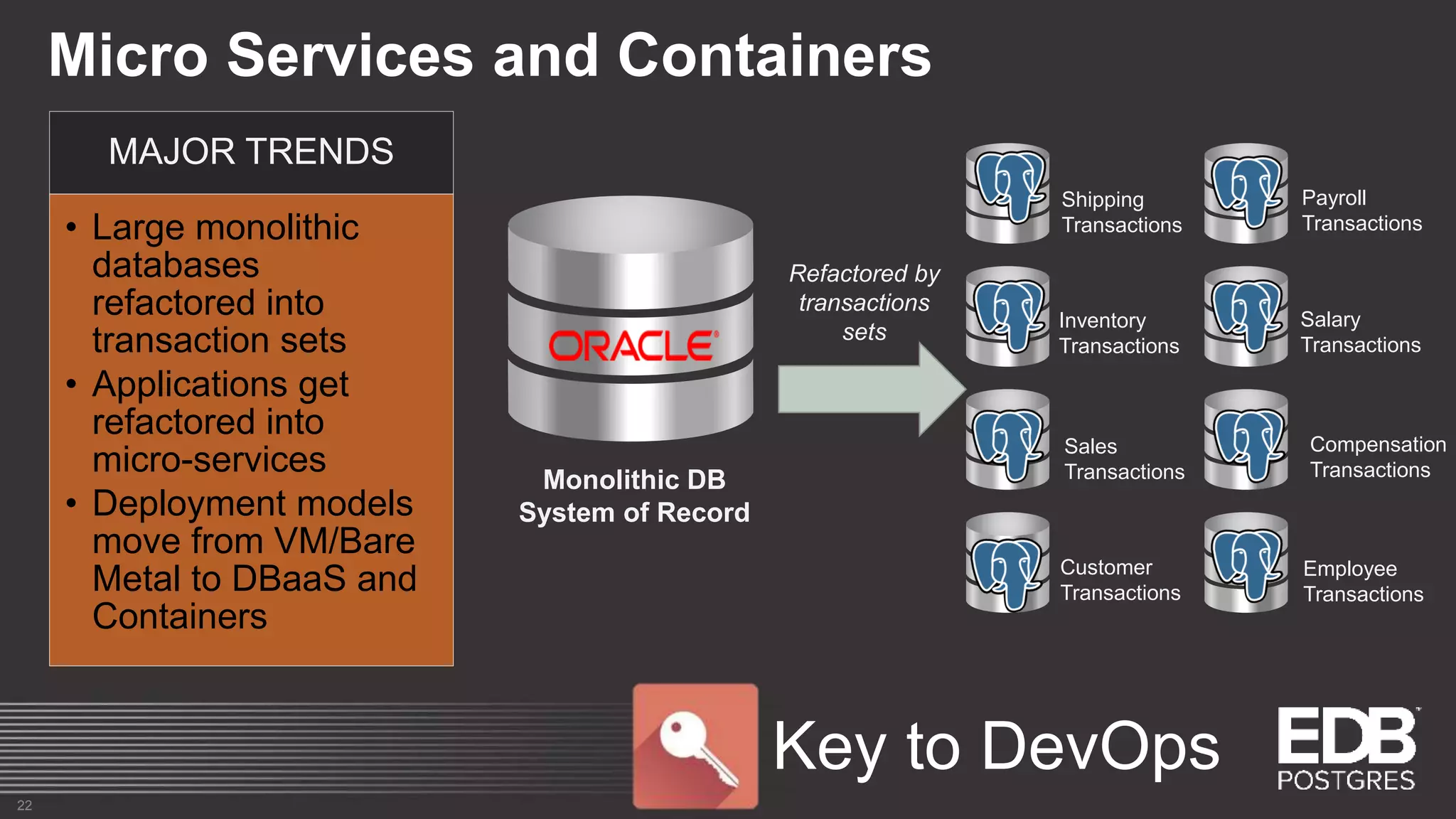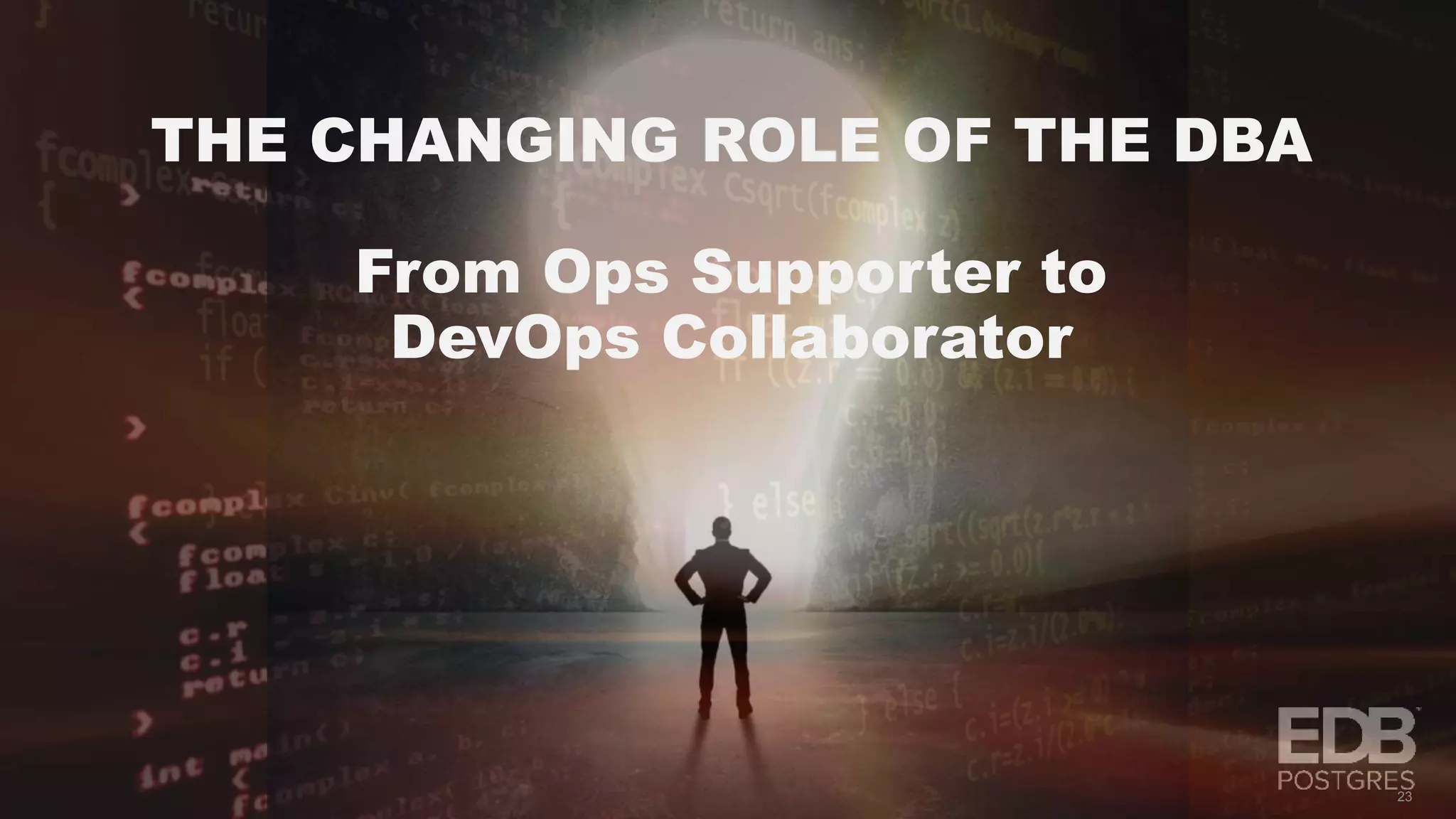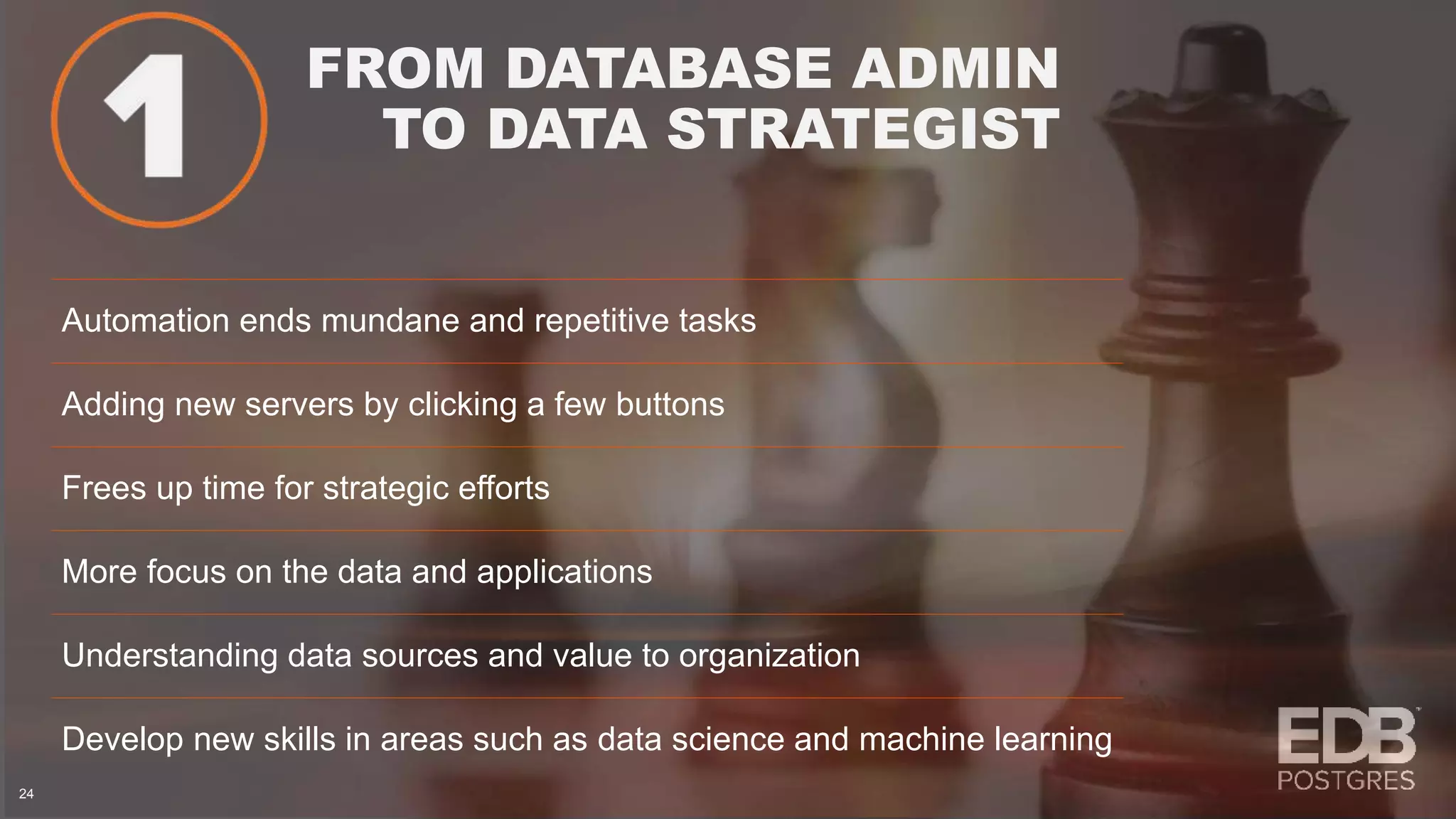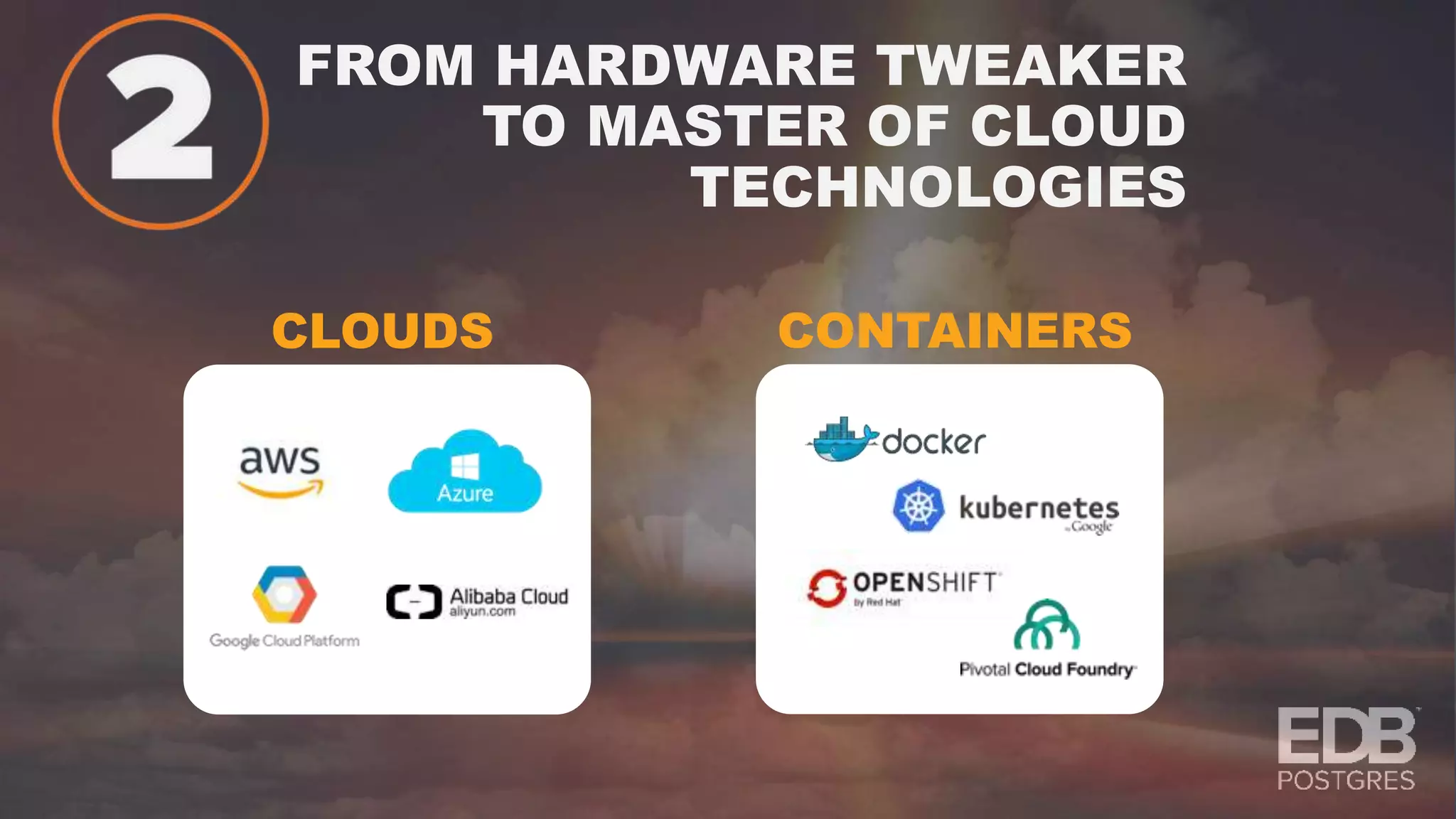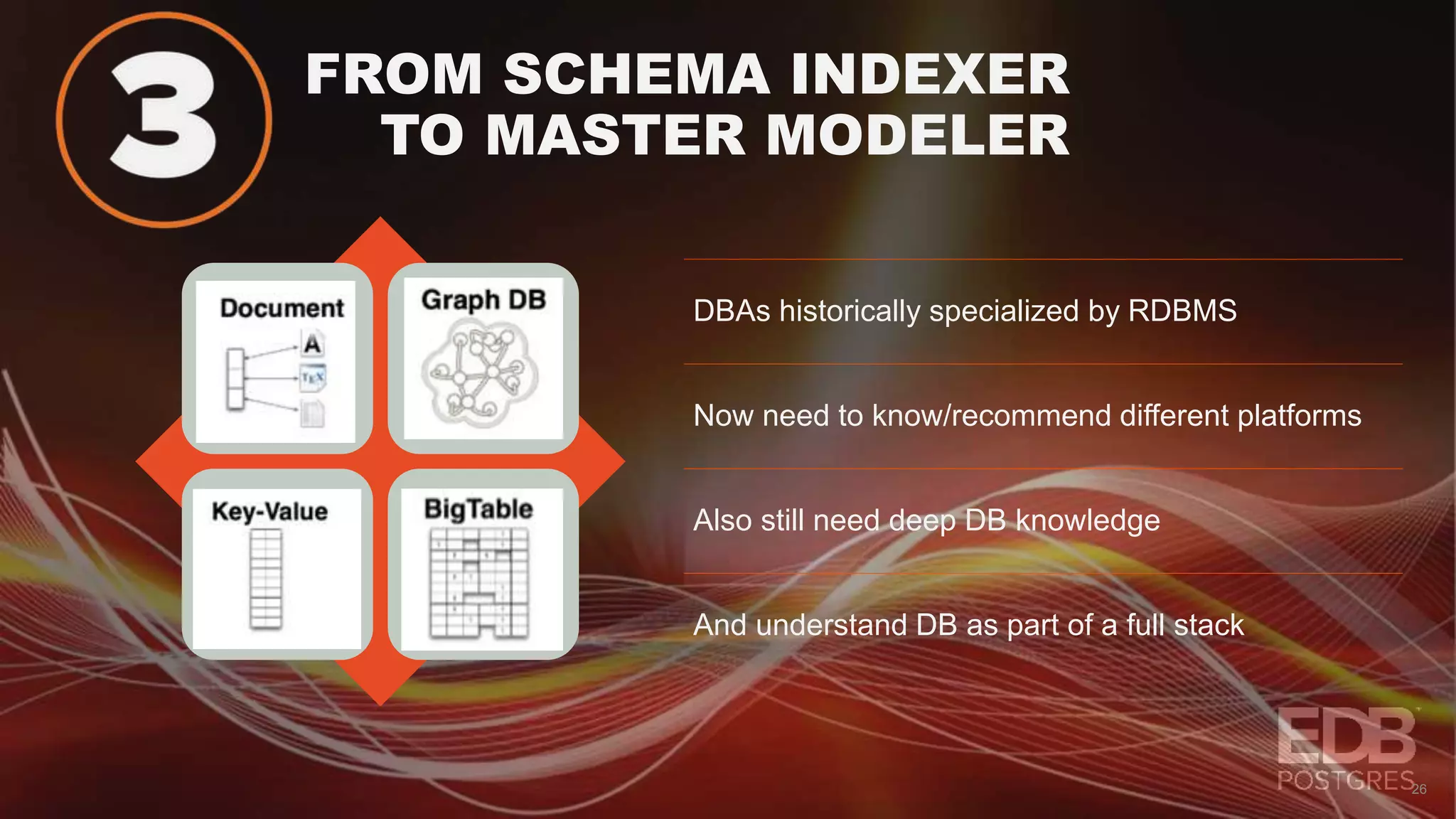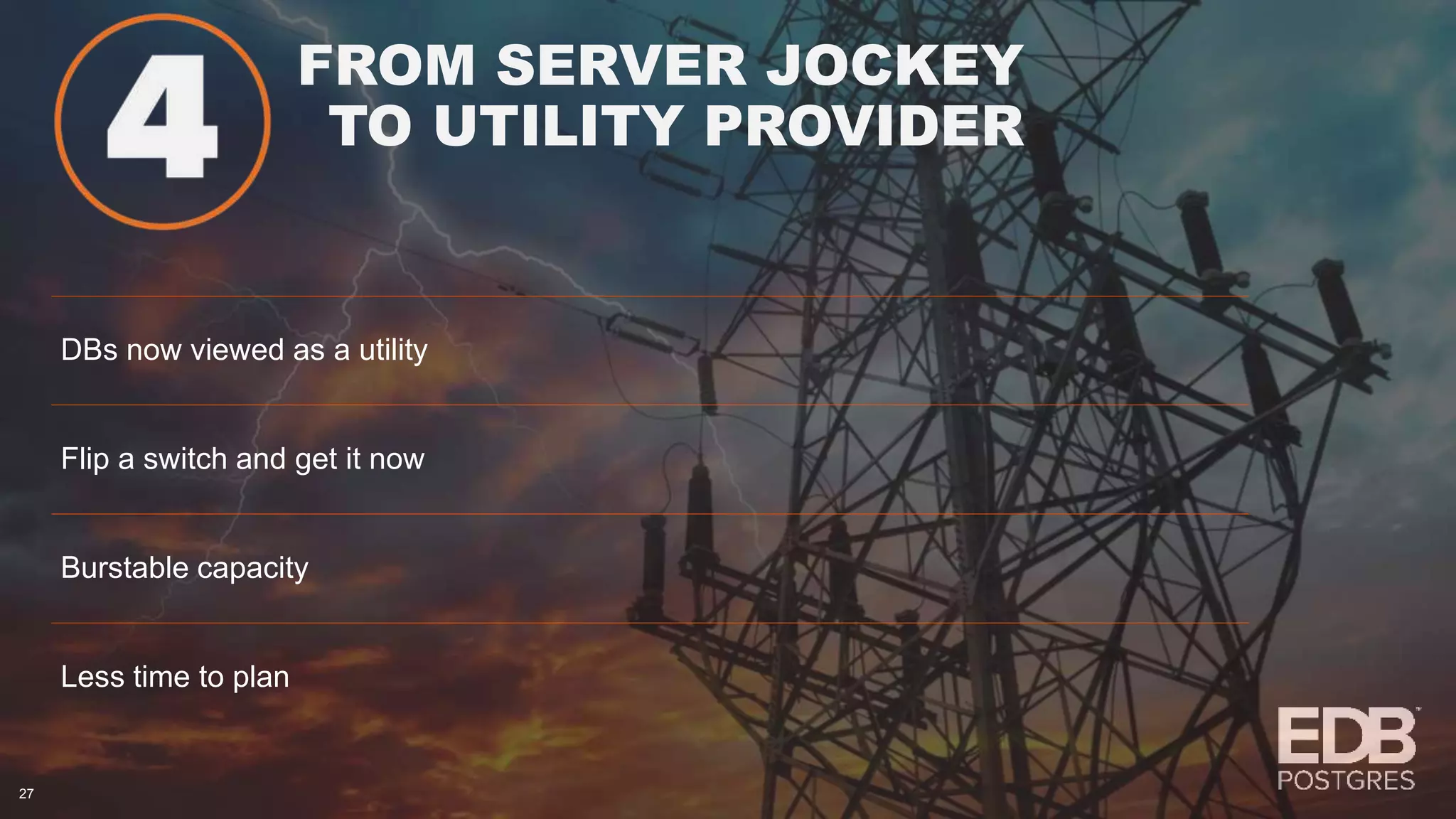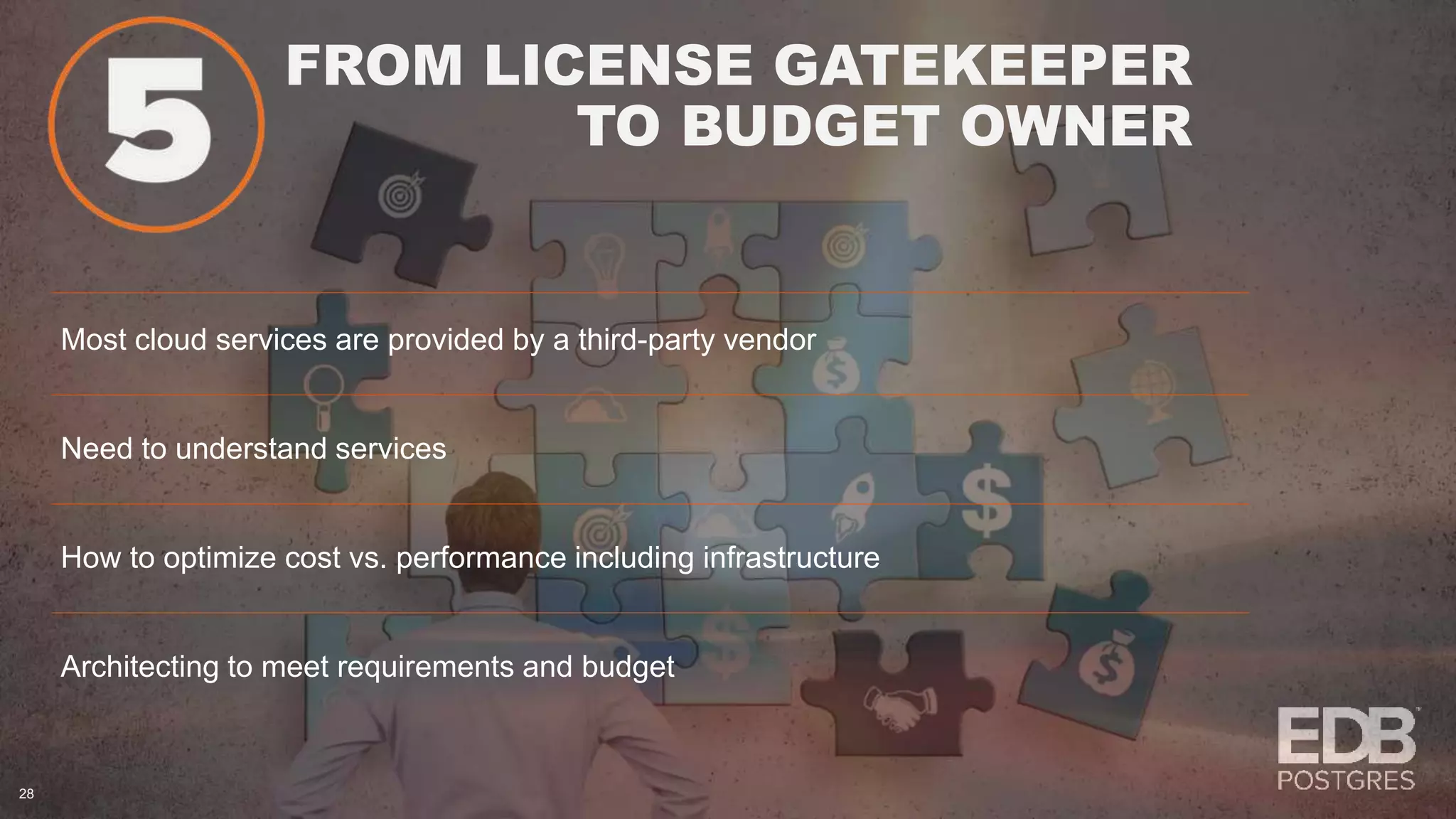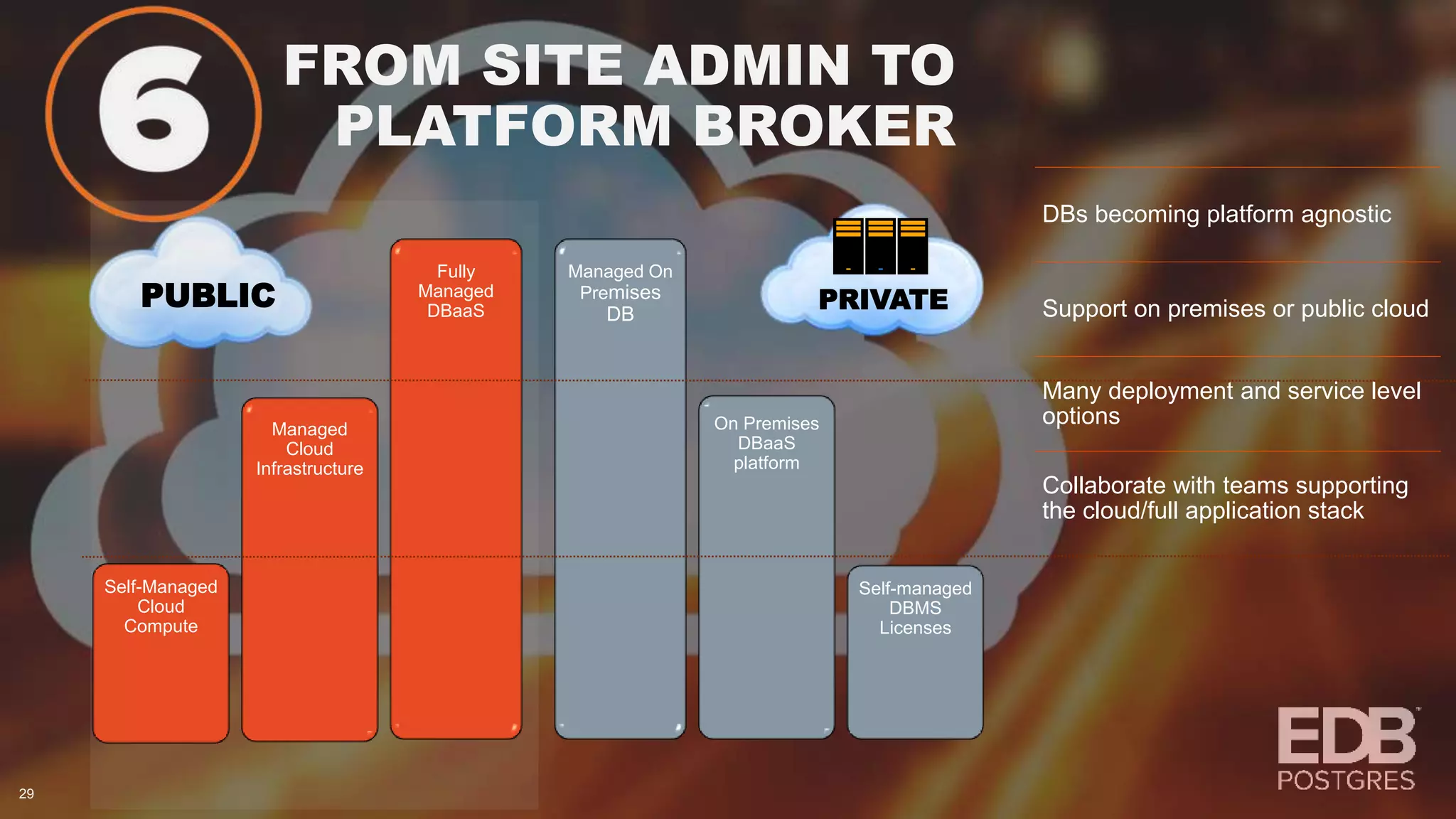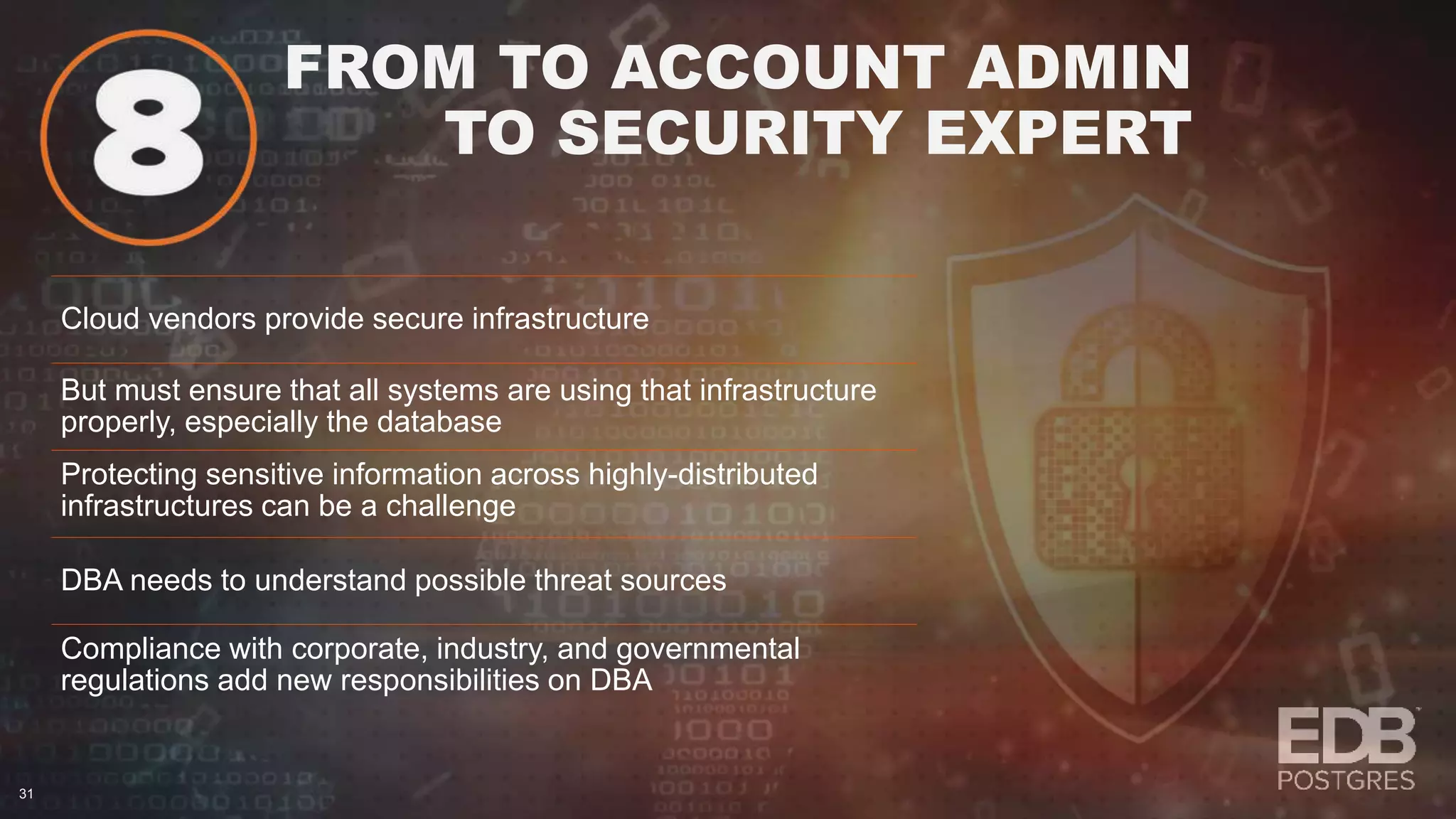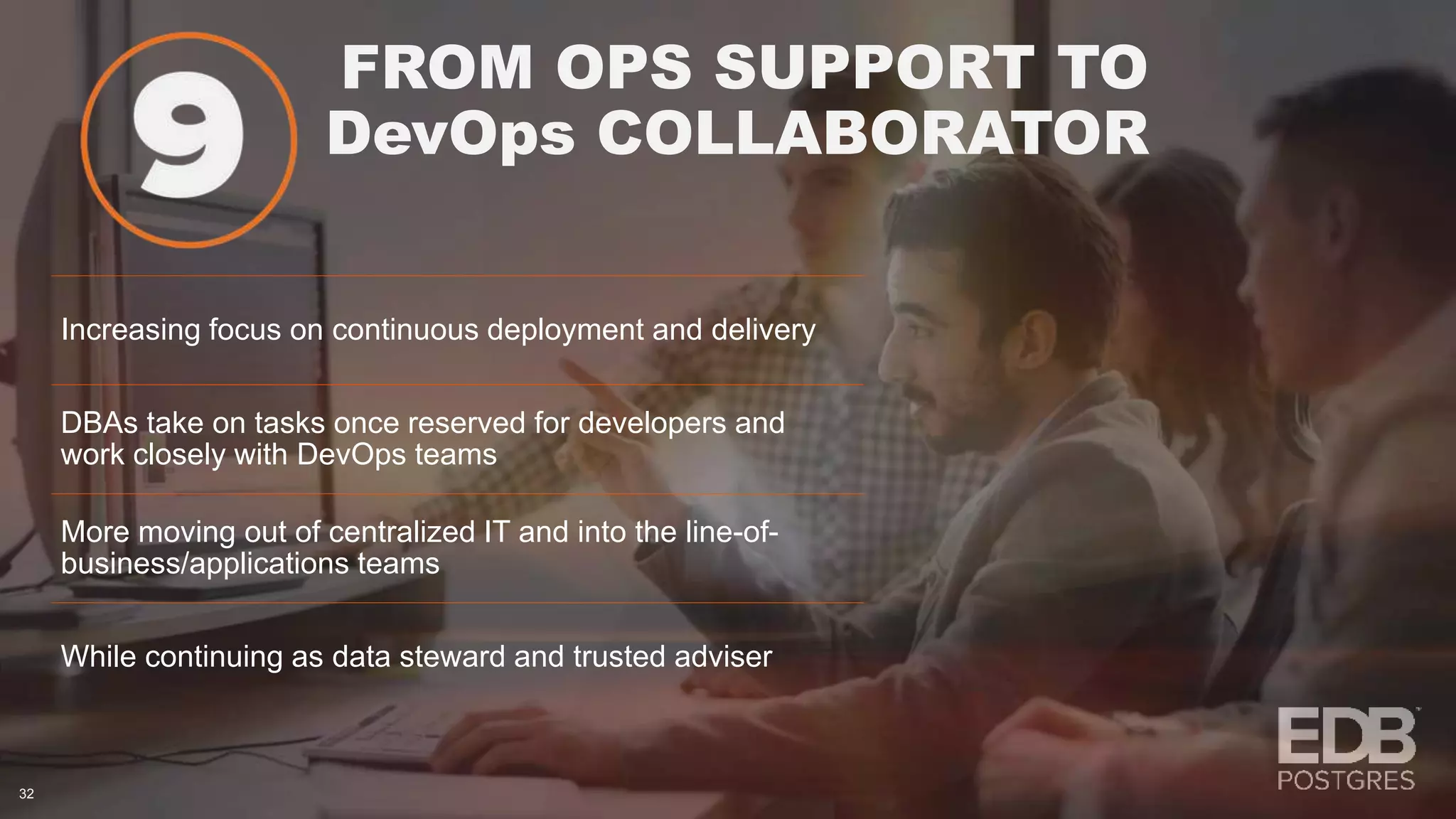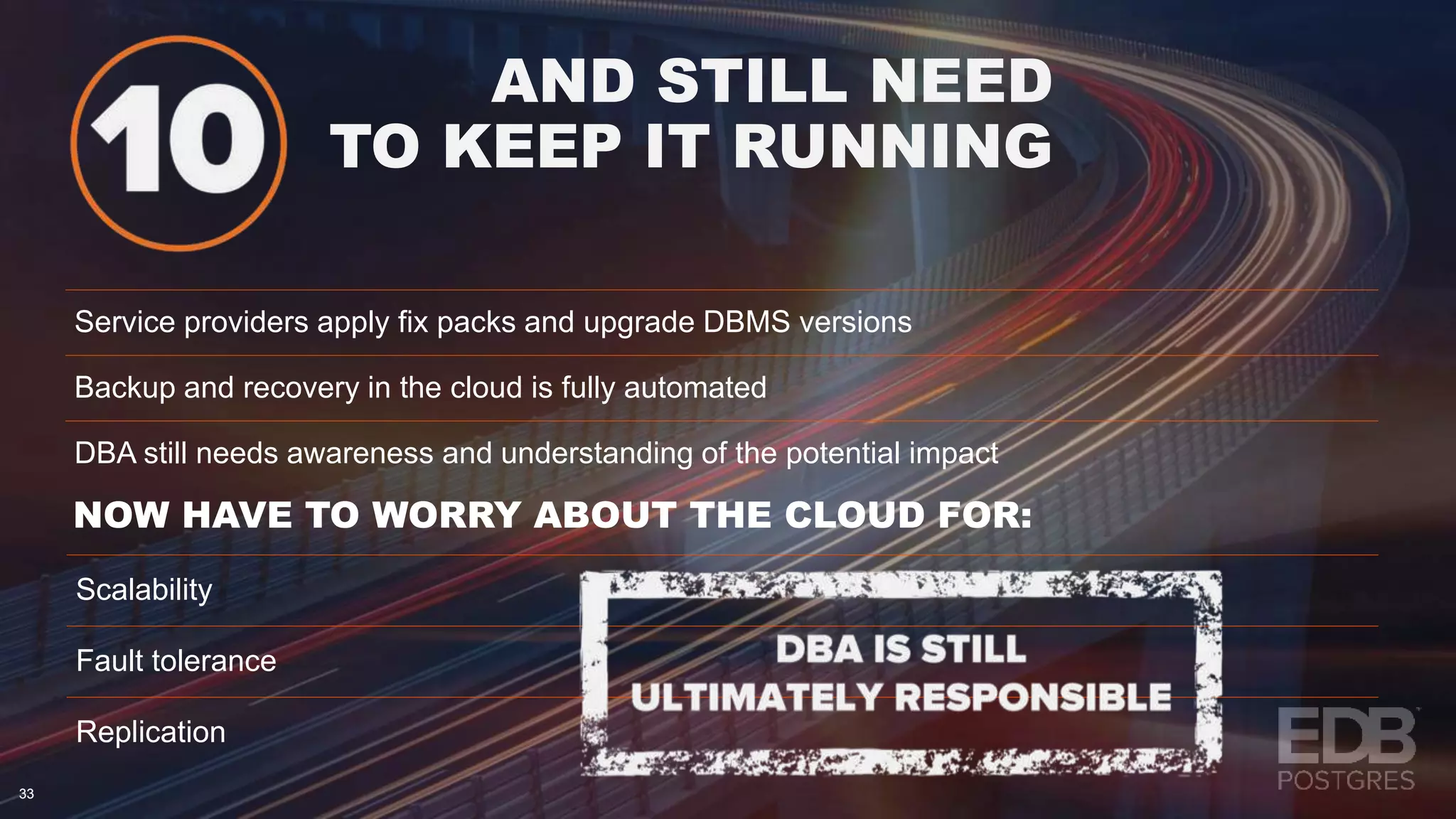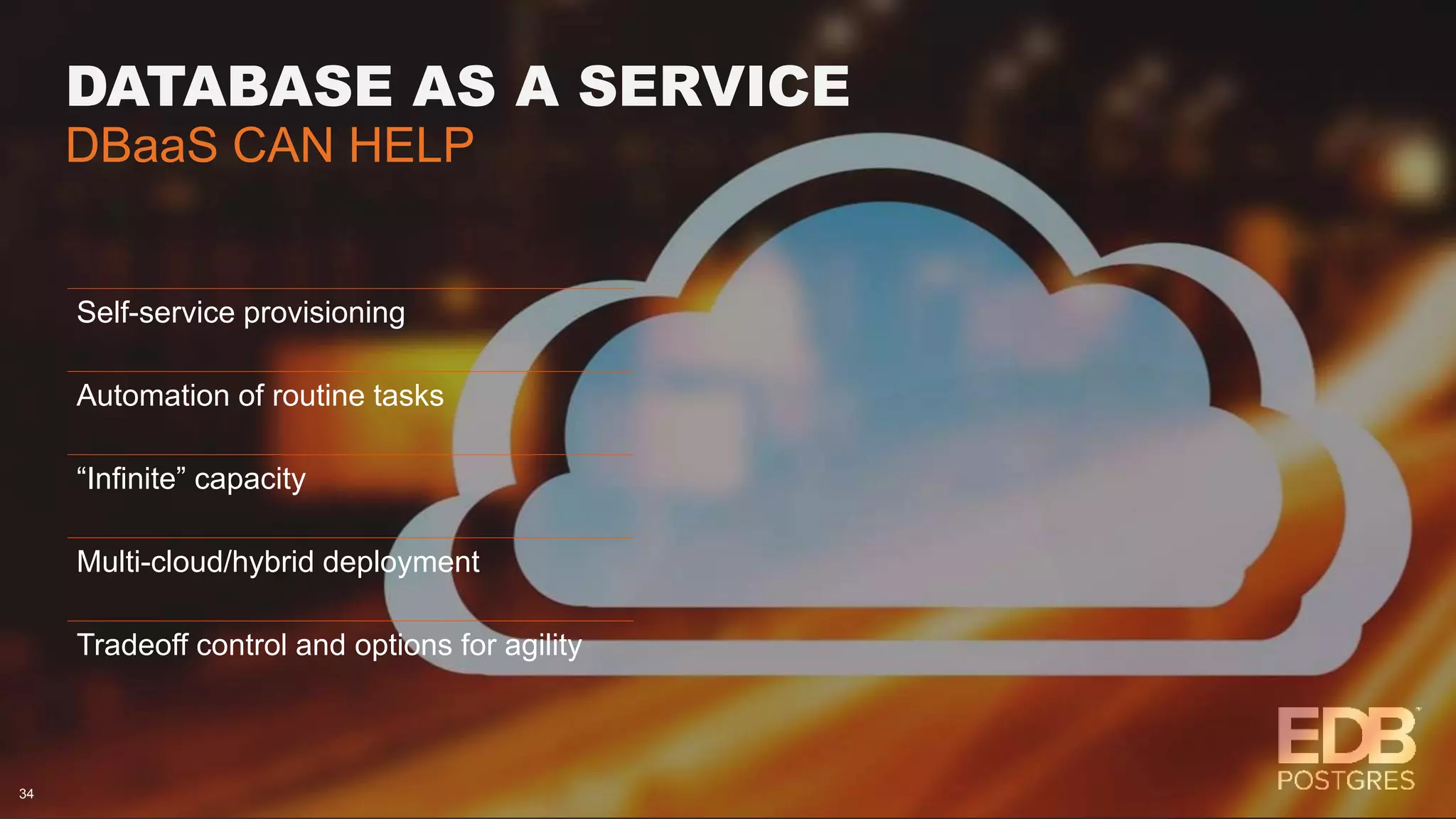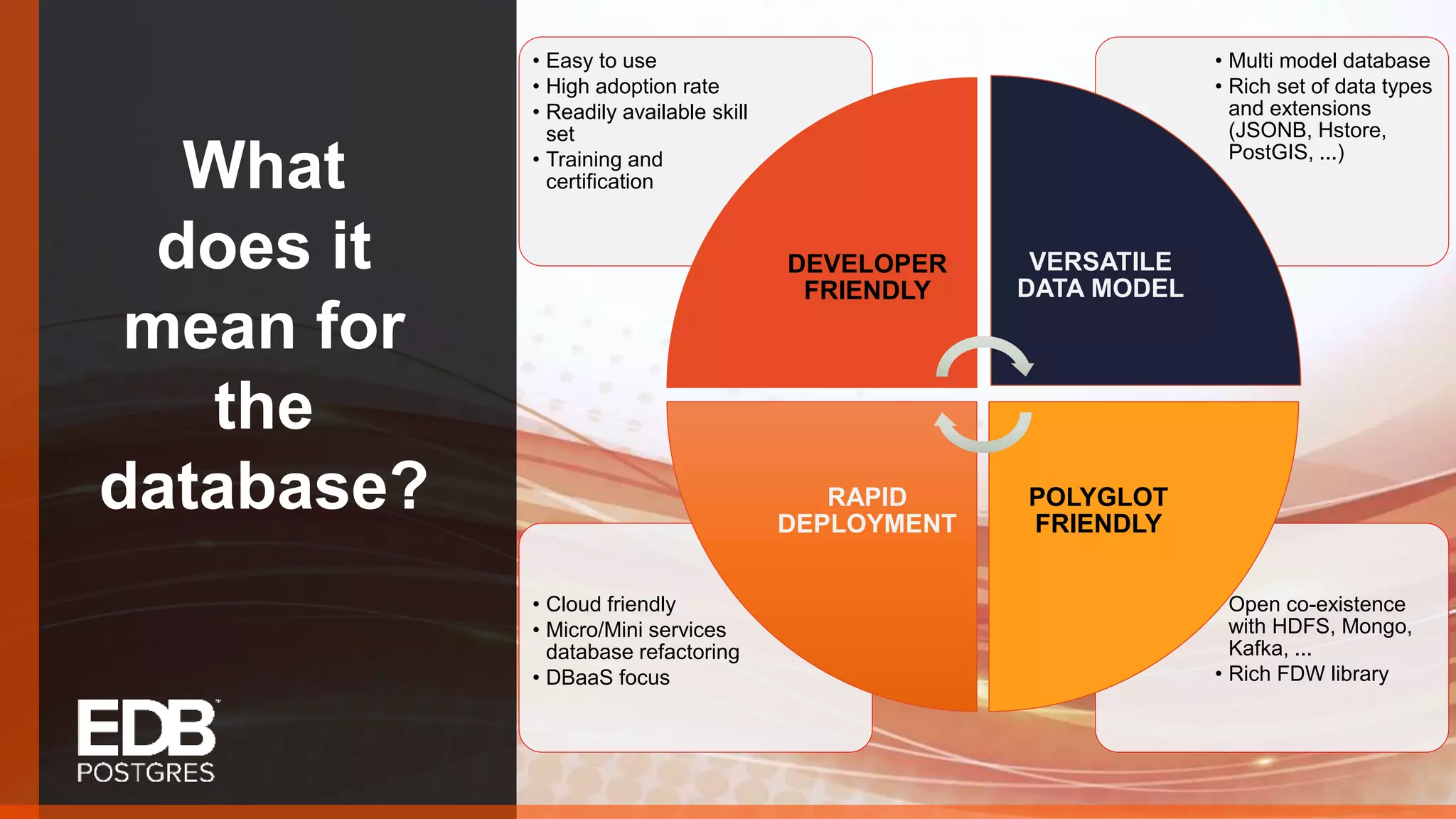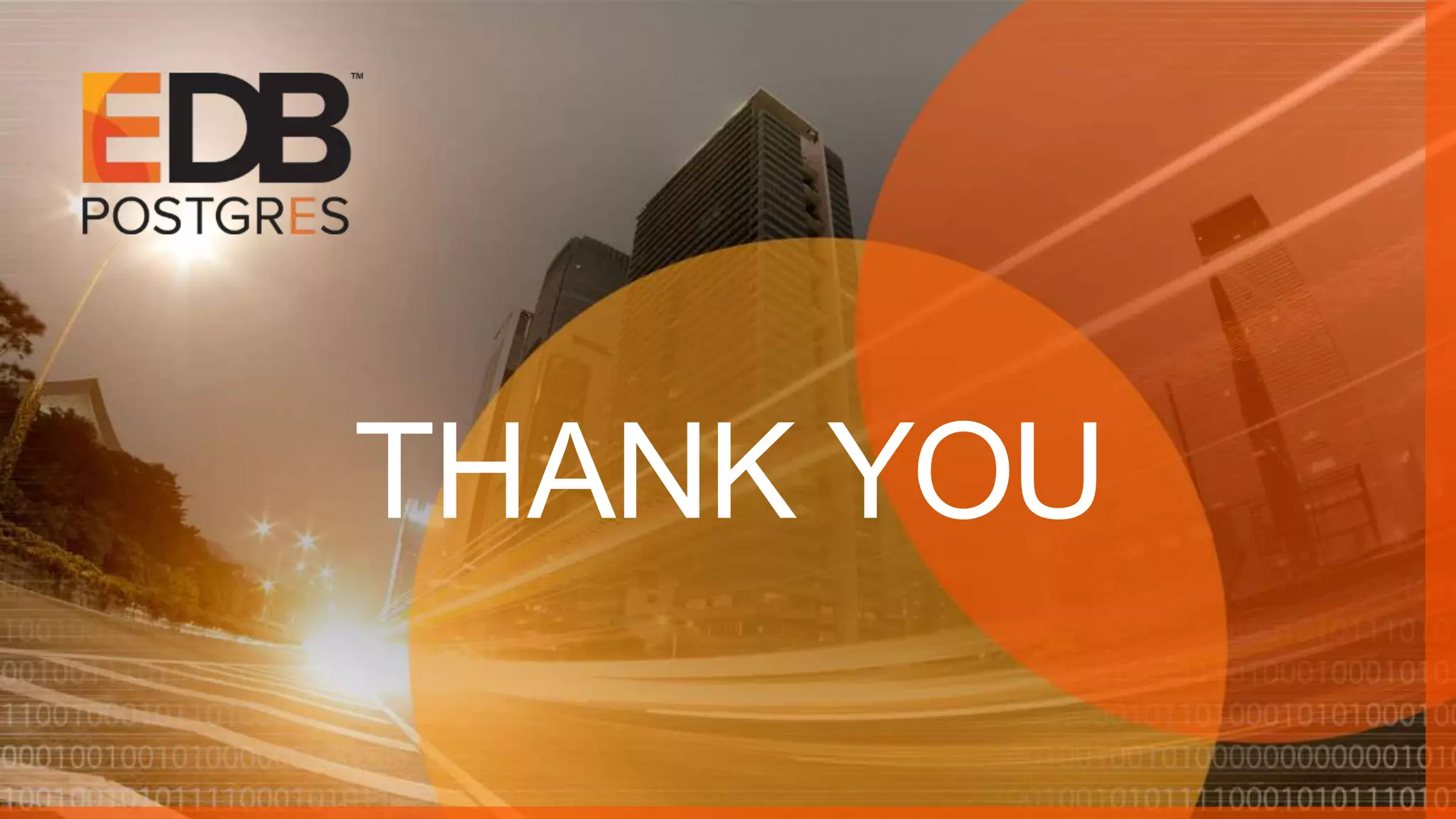This document discusses how Postgres fits into a DevOps world. It notes that as companies become more software-focused, DevOps practices like continuous integration/delivery, microservices, and containers are on the rise. This means databases need to be developer-friendly, support versatile data models like JSON, integrate with other technologies, and allow for rapid deployment including on databases-as-a-service platforms. Postgres is well-suited to this new environment as an open-source, multi-platform database that can scale easily and works well with other data systems through foreign data wrappers. The role of the database administrator is also changing to focus more on strategic tasks like performance, security, and data management rather than system administration.
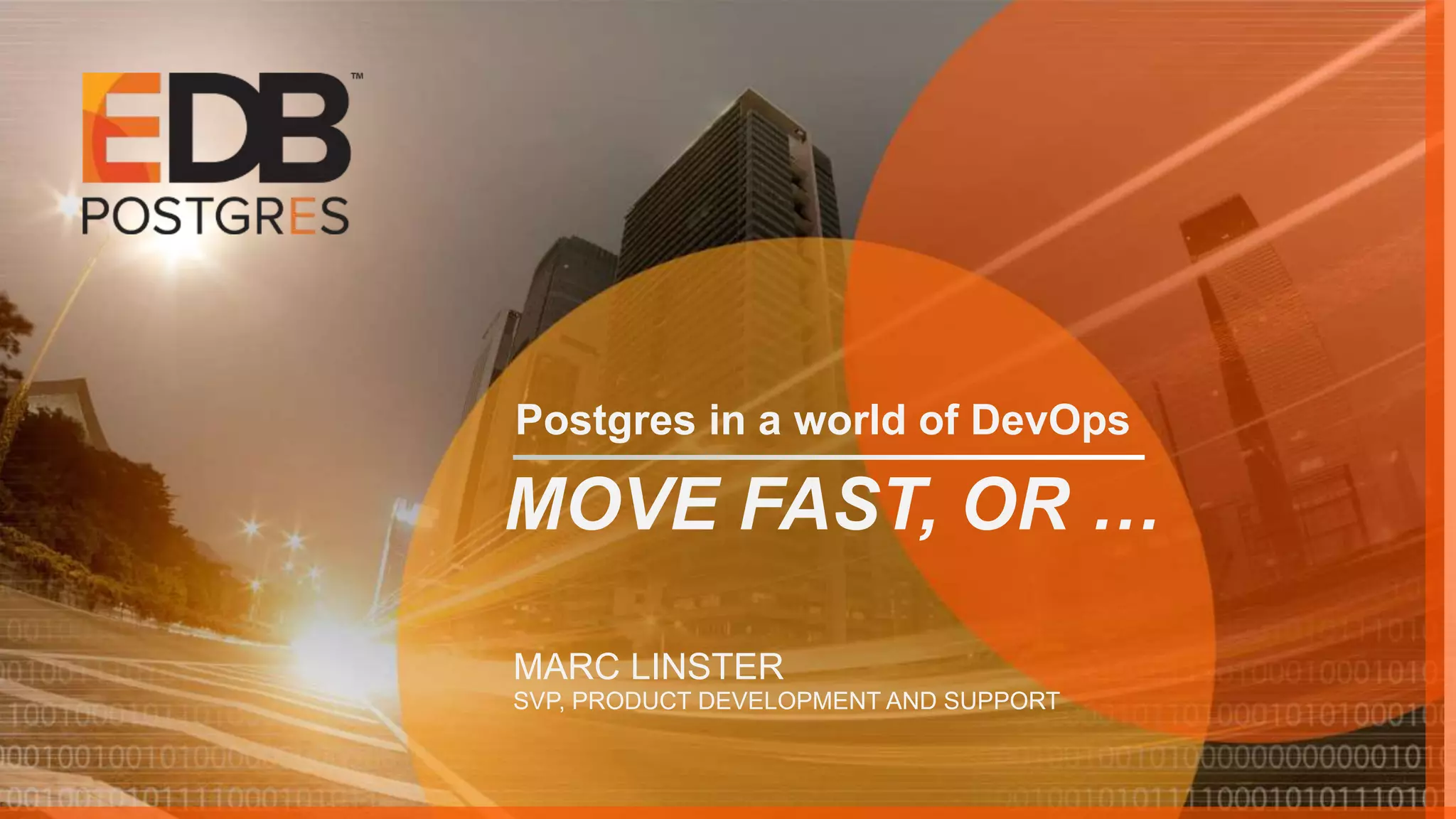
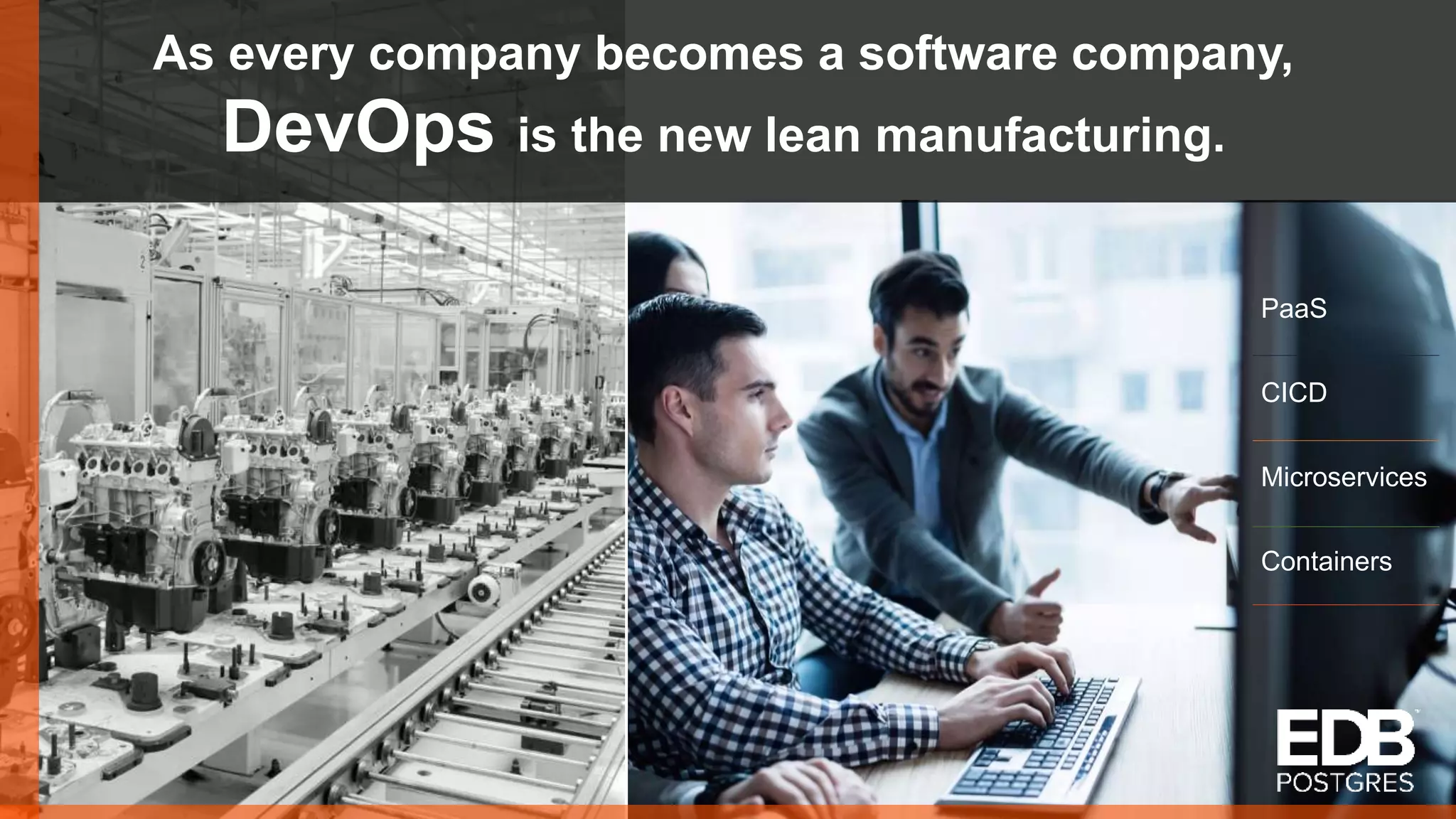
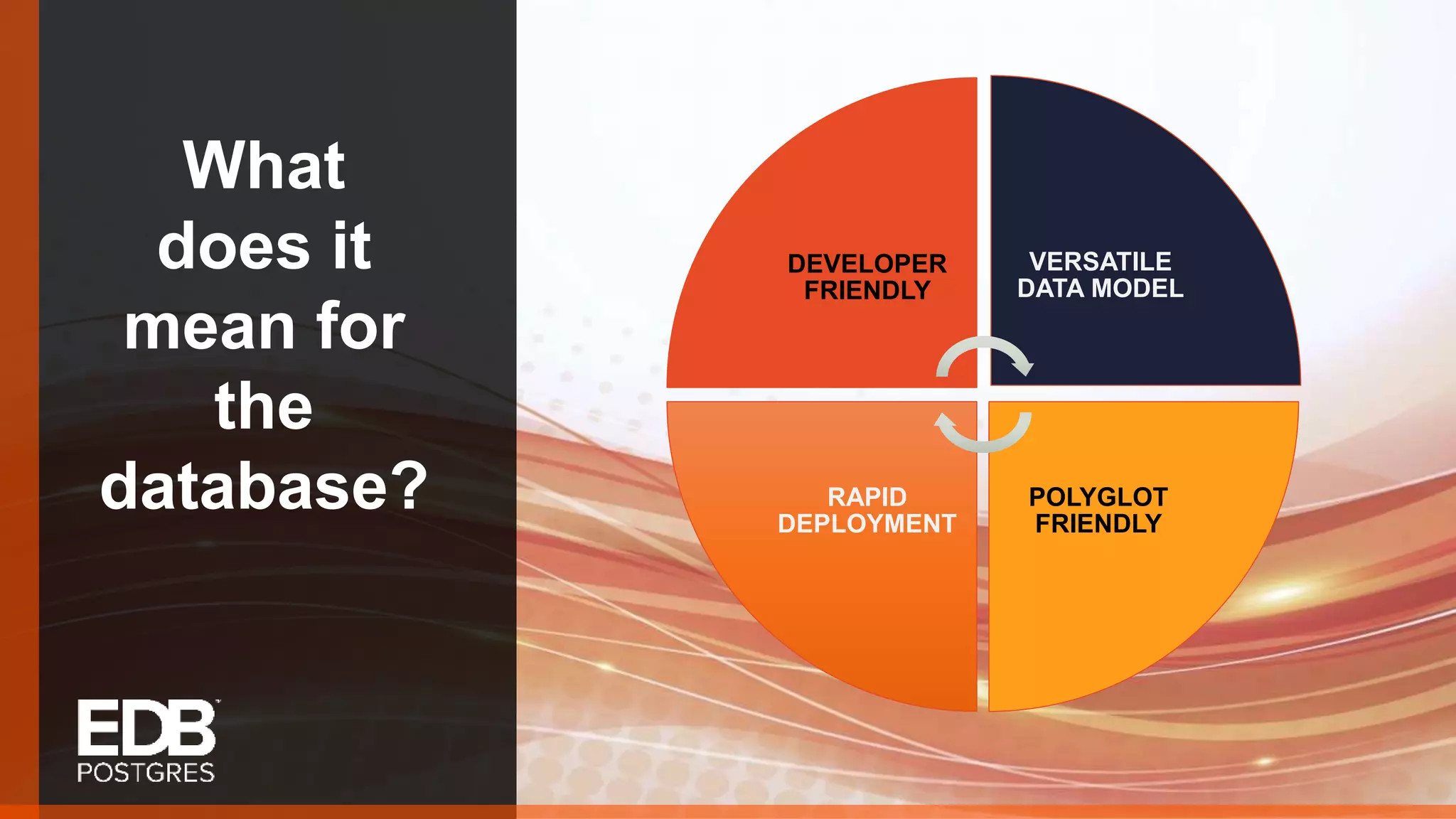
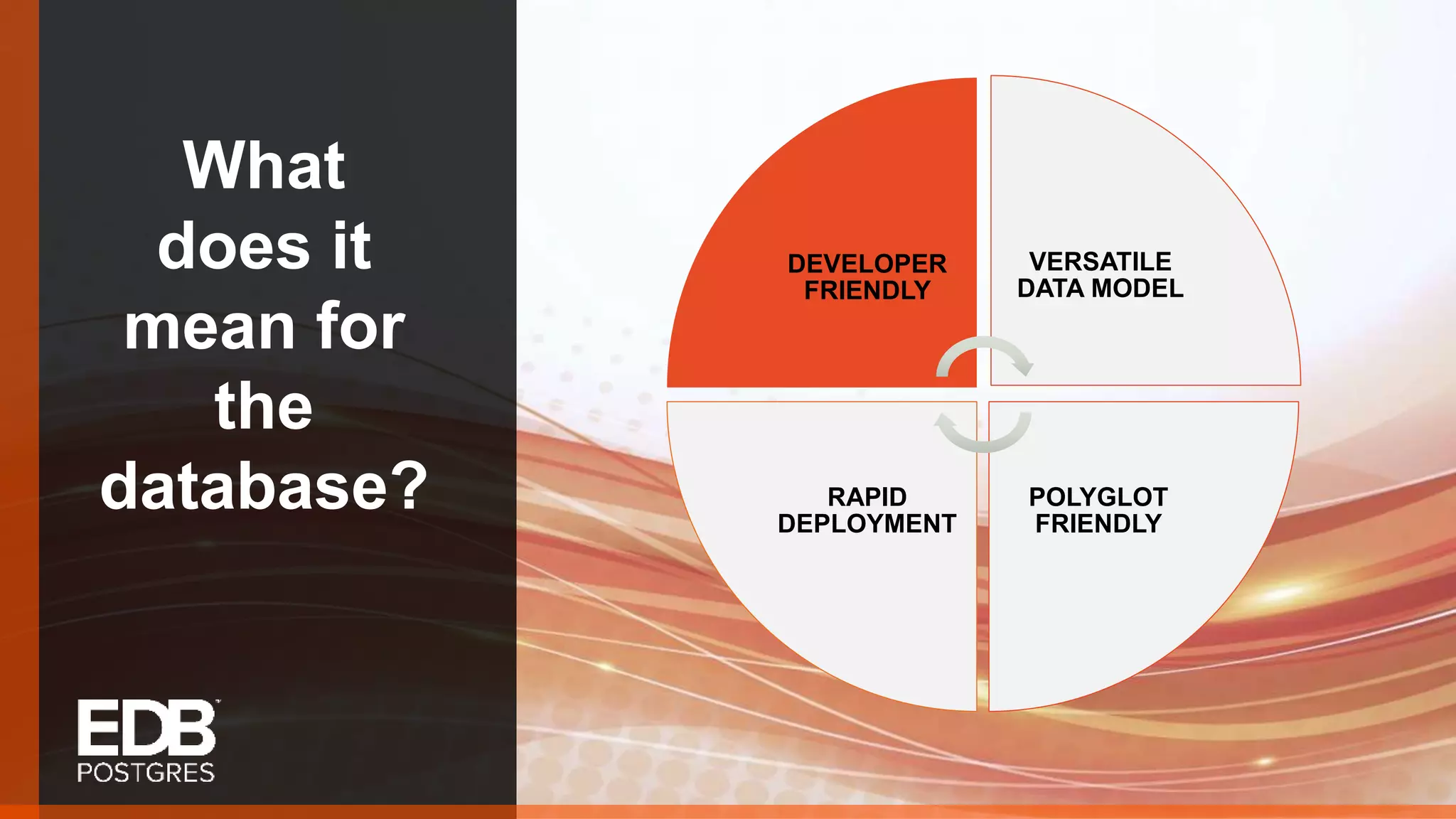
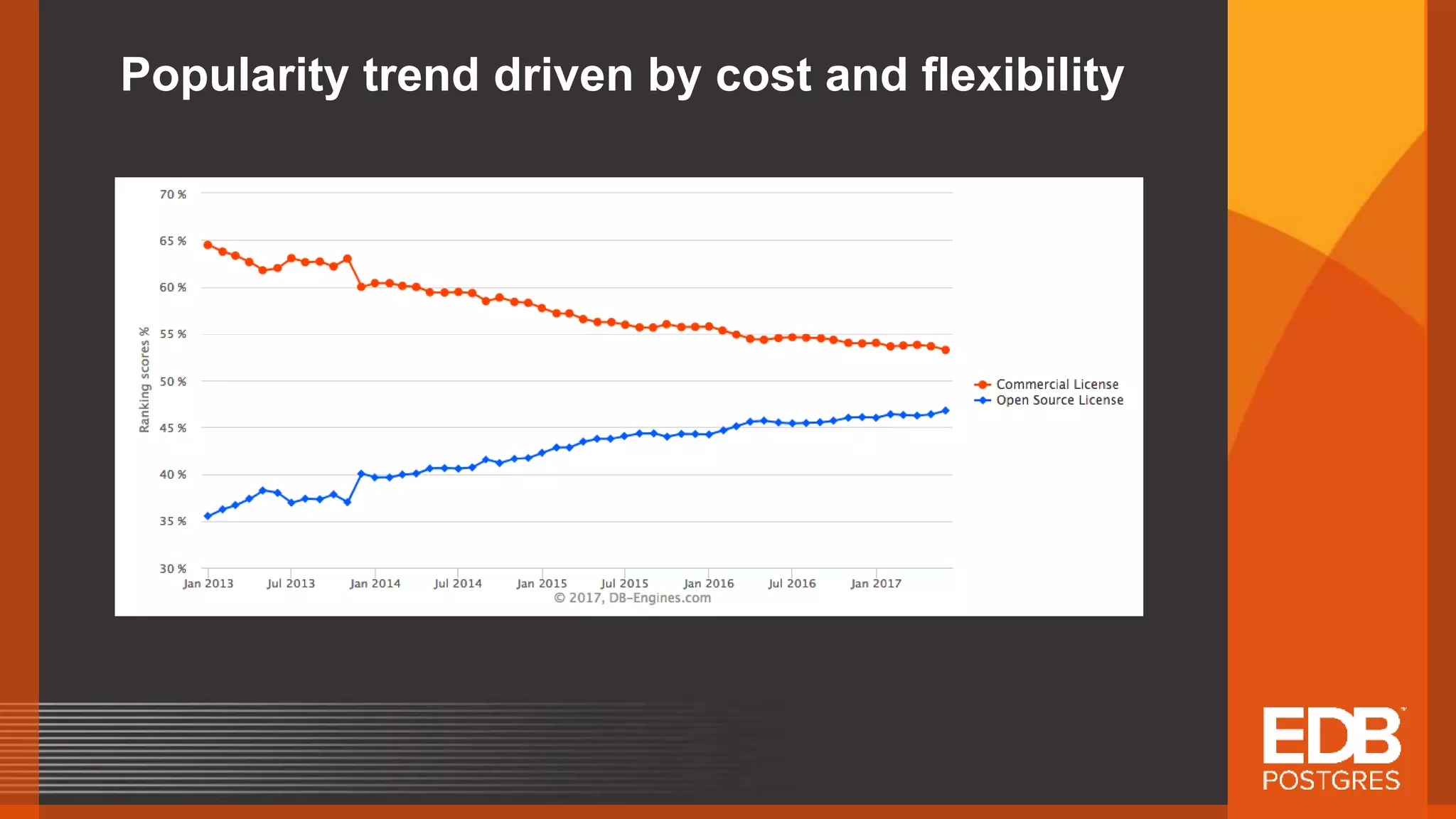
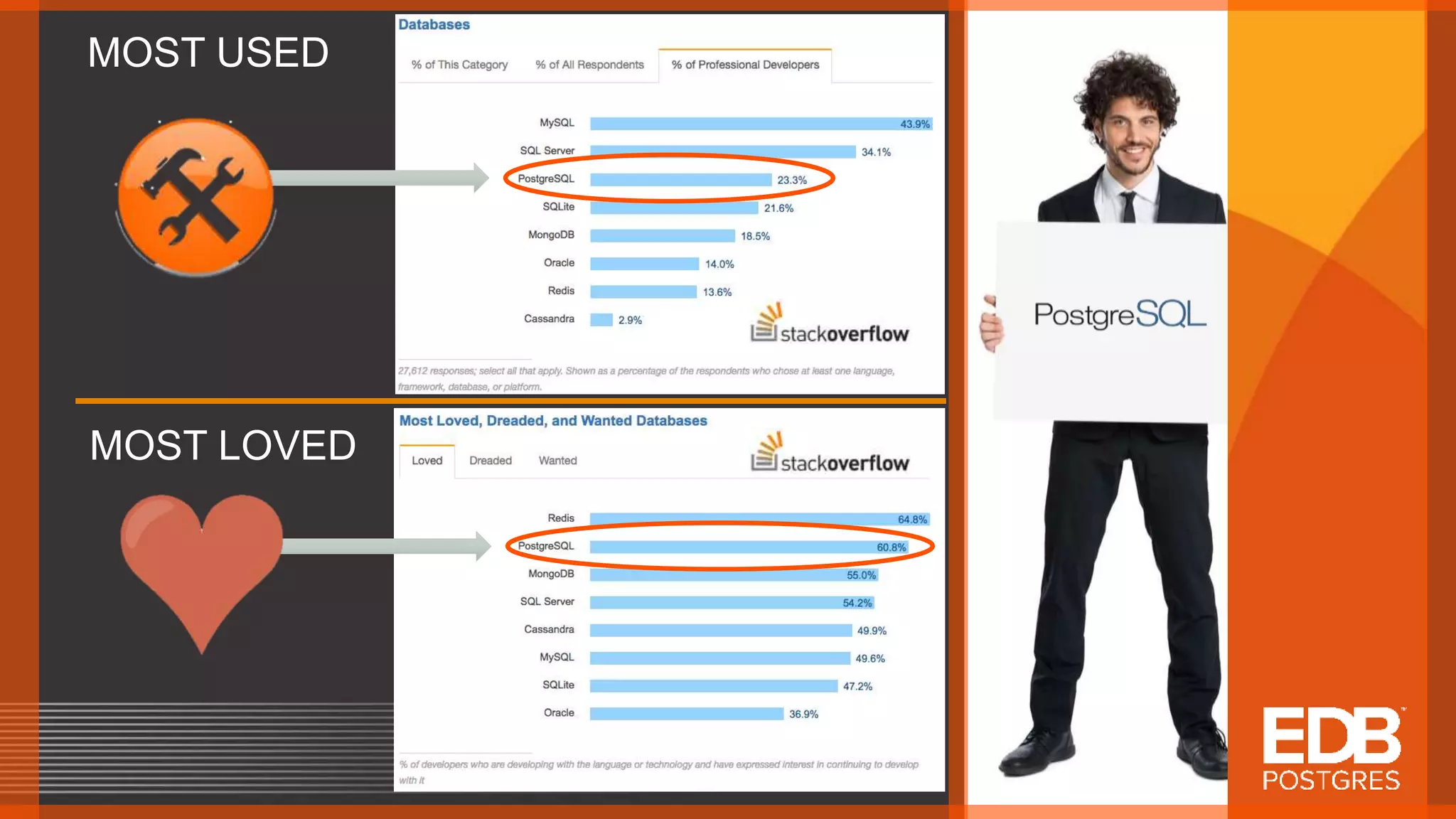
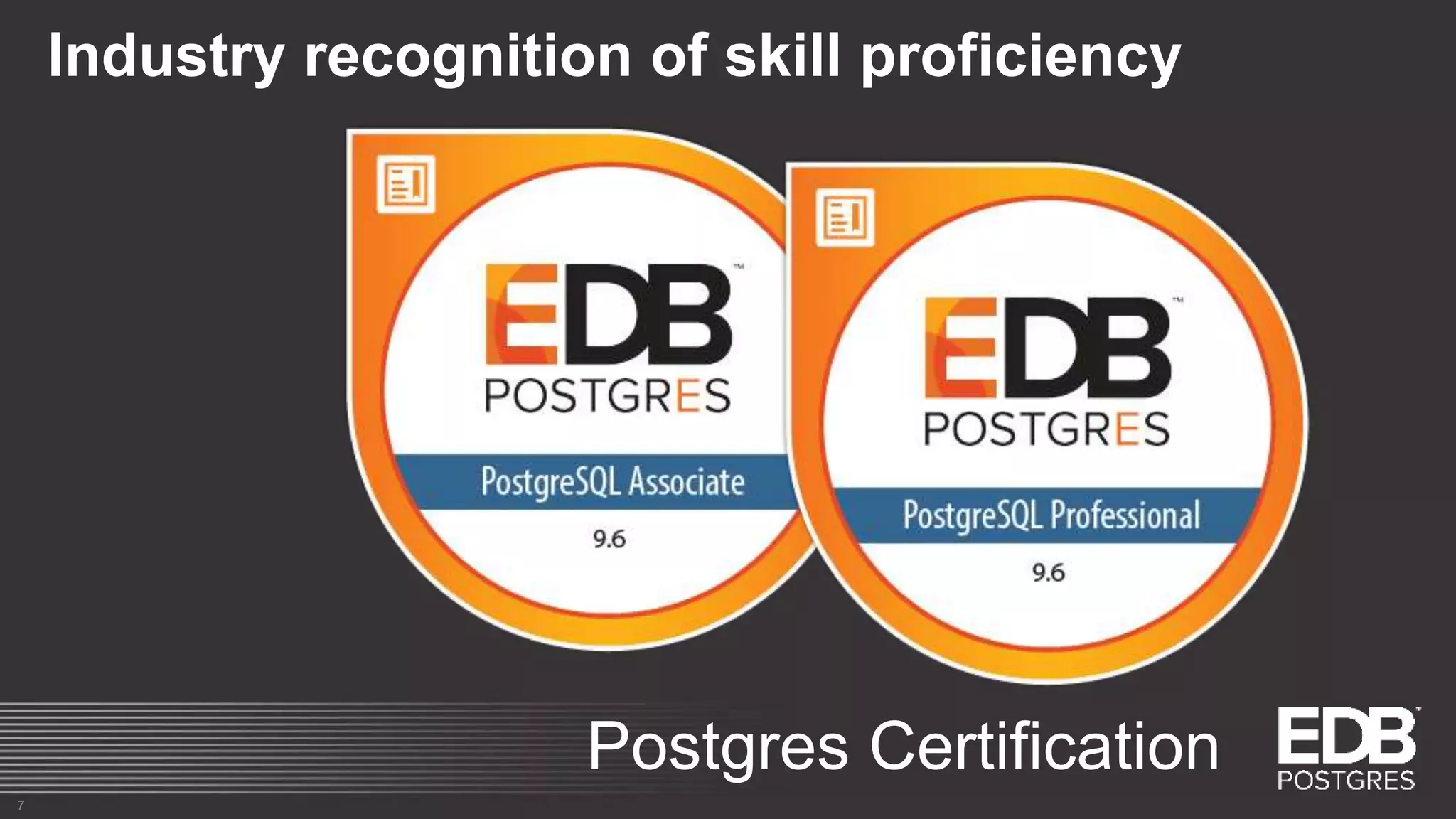
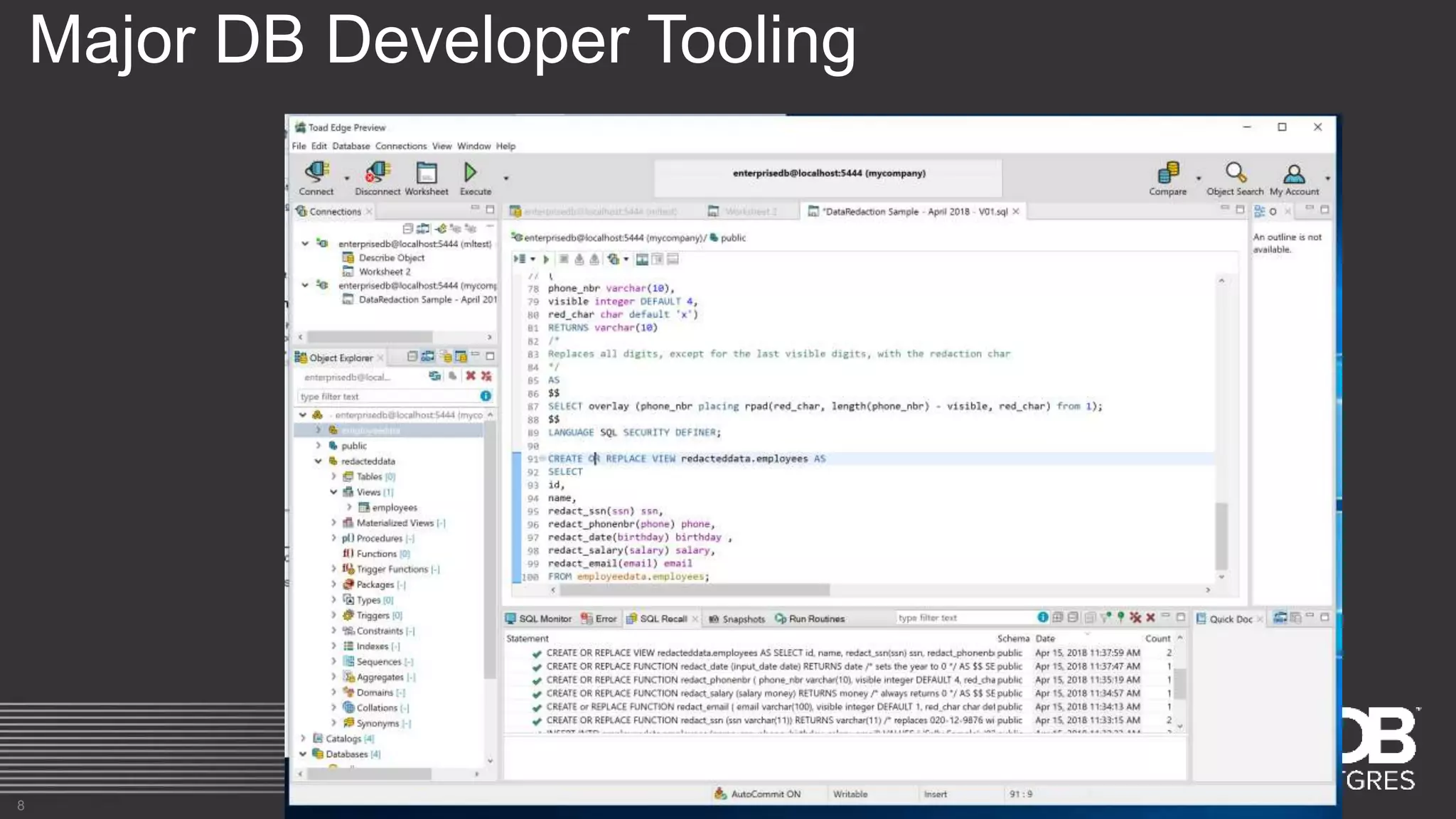
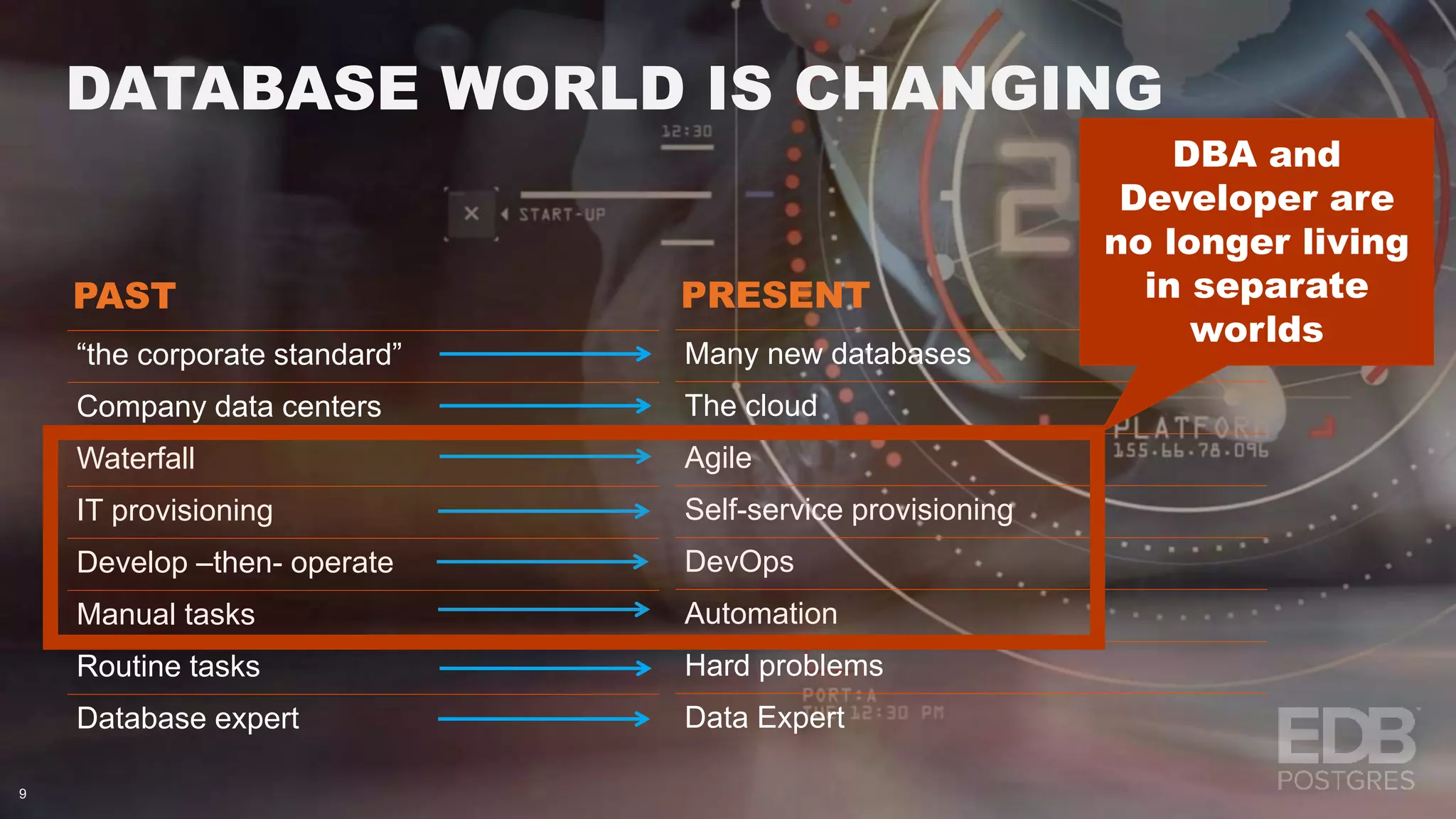
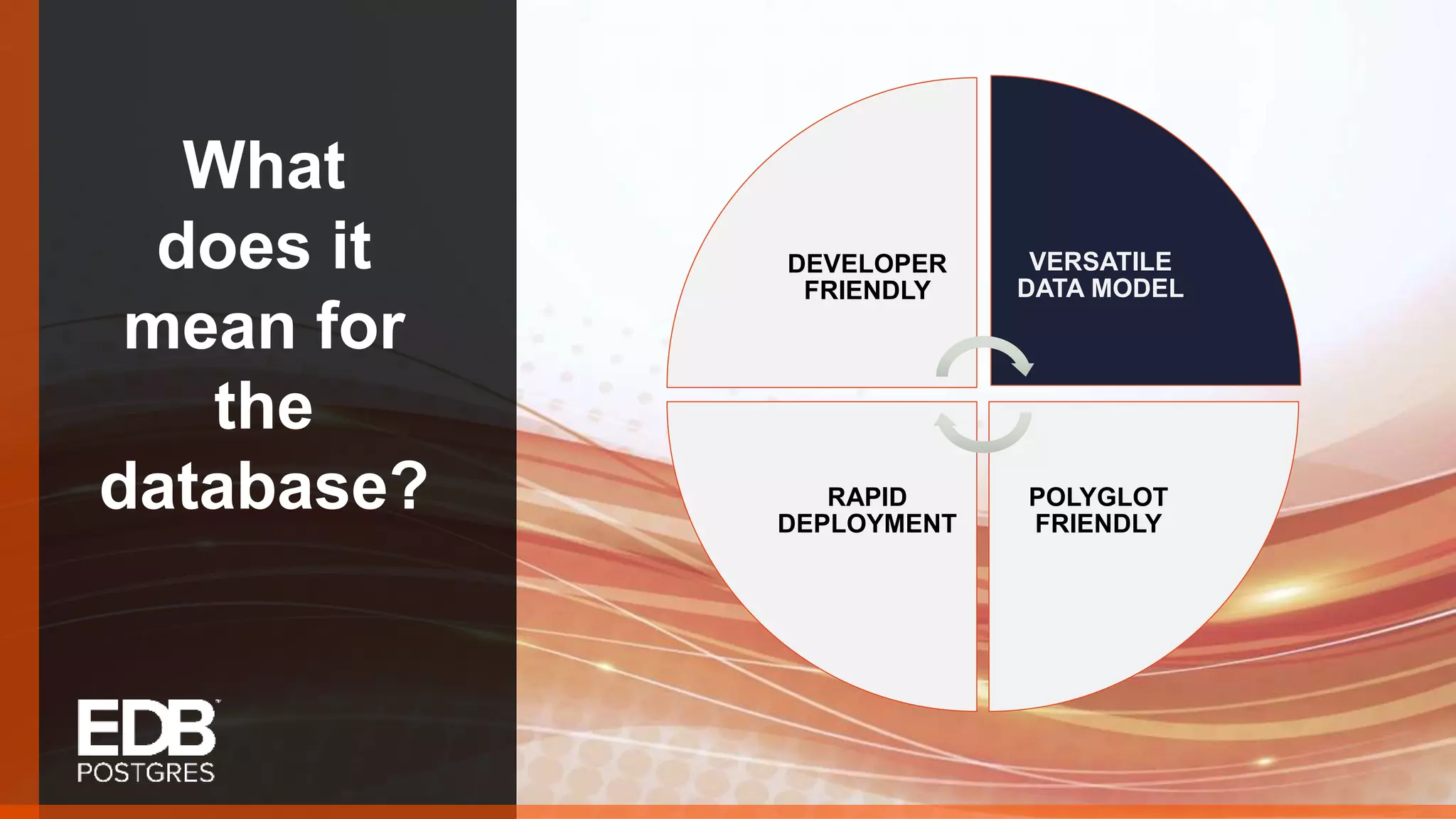
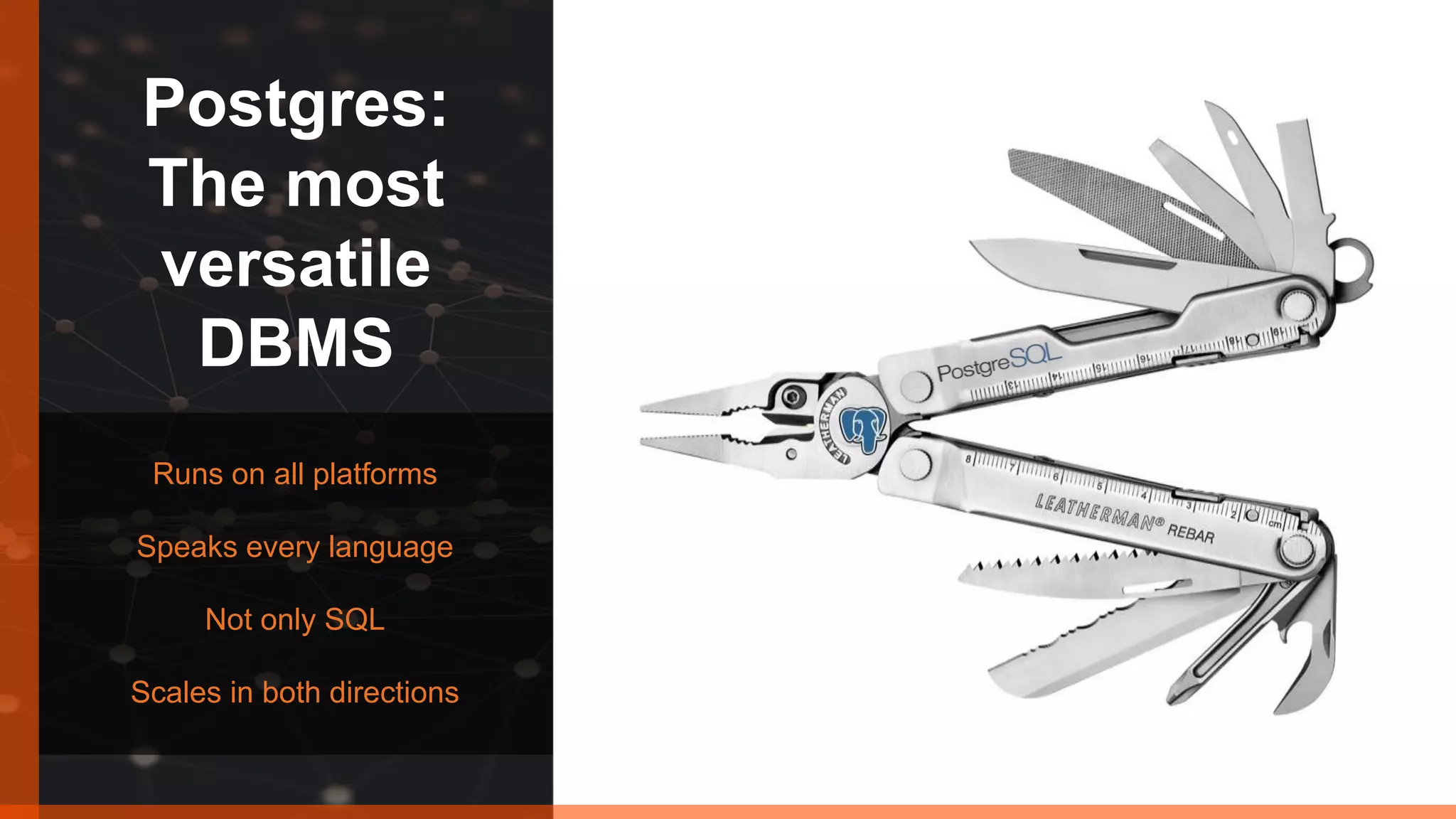
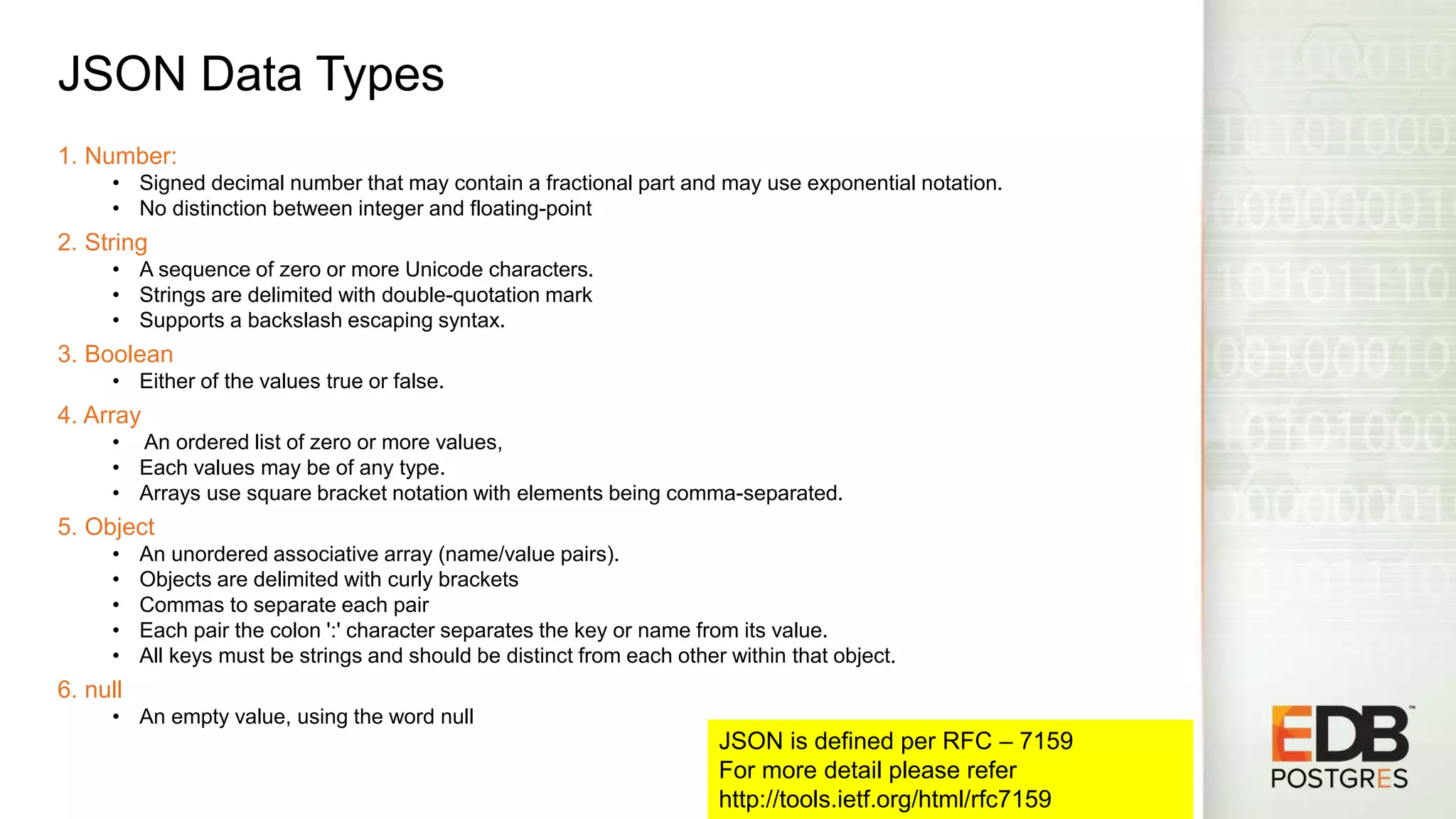
![JSON Data Type Example { "firstName": "John", -- String Type "lastName": "Smith", -- String Type "isAlive": true, -- Boolean Type "age": 25, -- Number Type "height_cm": 167.6, -- Number Type "address": { -- Object Type "streetAddress": "21 2nd Street”, "city": "New York”, "state": "NY”, "postalCode": "10021-3100” } "phoneNumbers": [ -- Object Array { -- Object "type": "home”, "number": "212 555-1234” }, { "type": "office”, "number": "646 555-4567” } ], "children": [], "spouse": null -- Null }](https://image.slidesharecdn.com/pgconfnewjersey20180419-v01-180503195210/75/PgConf-2018-Postgres-in-a-World-of-DevOps-13-2048.jpg)
